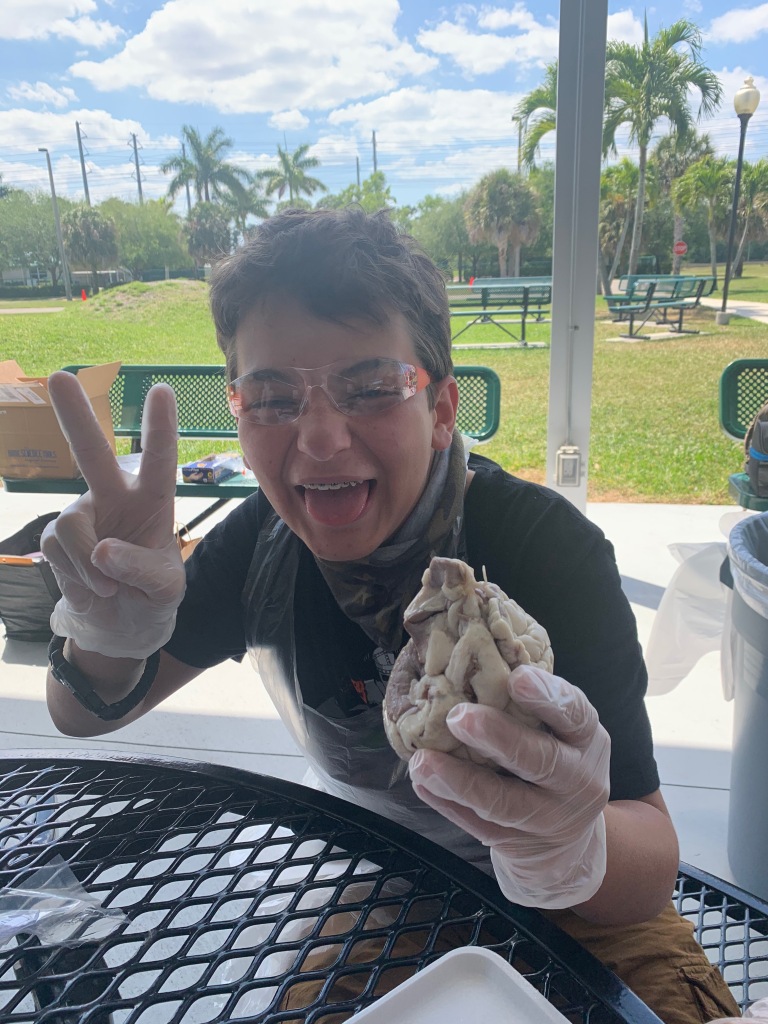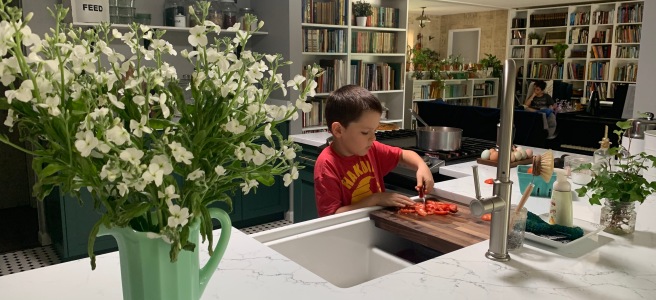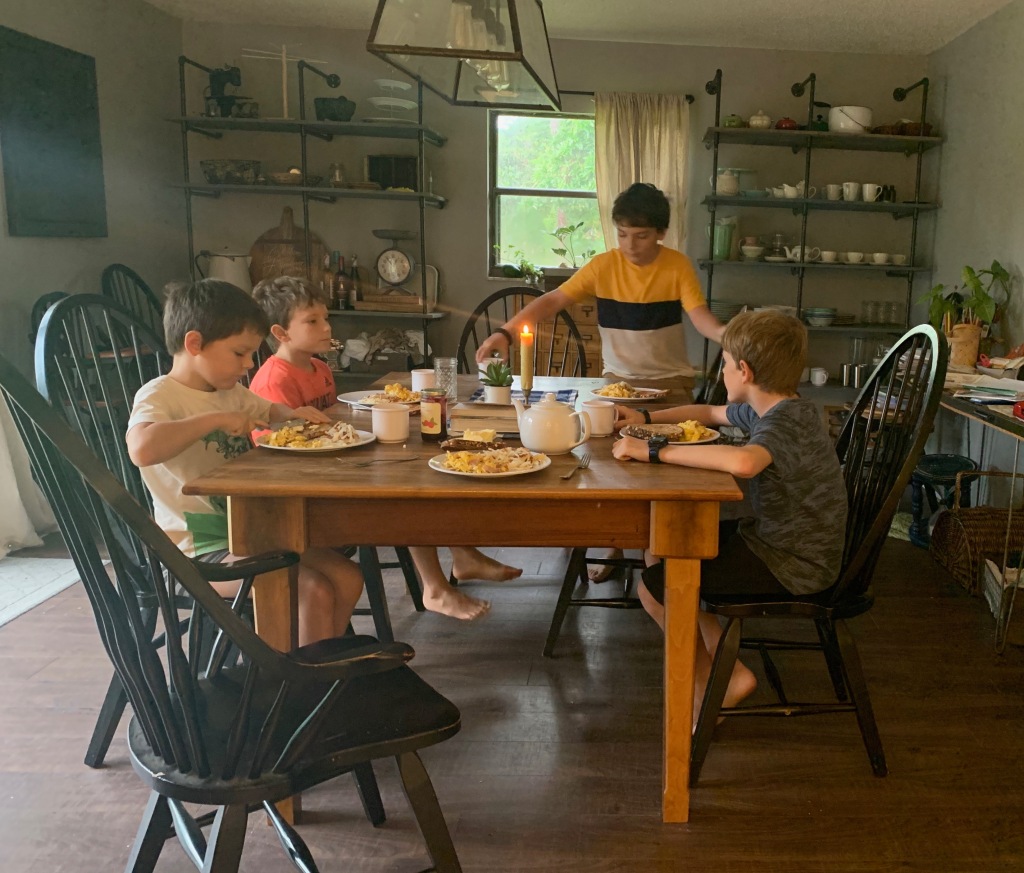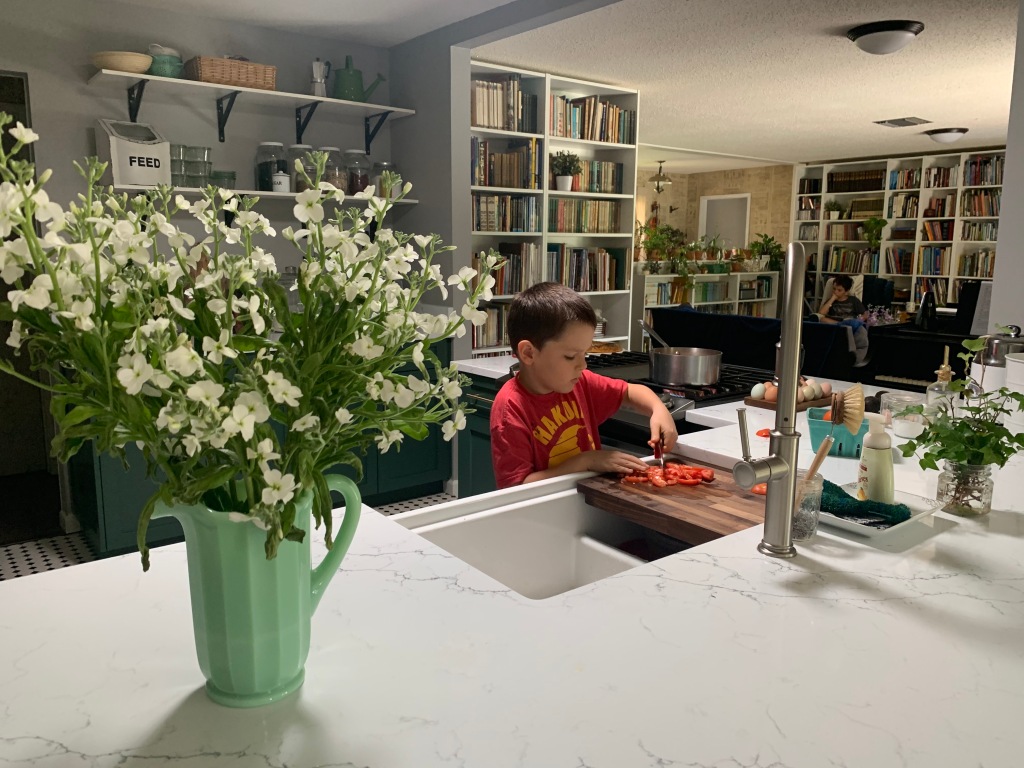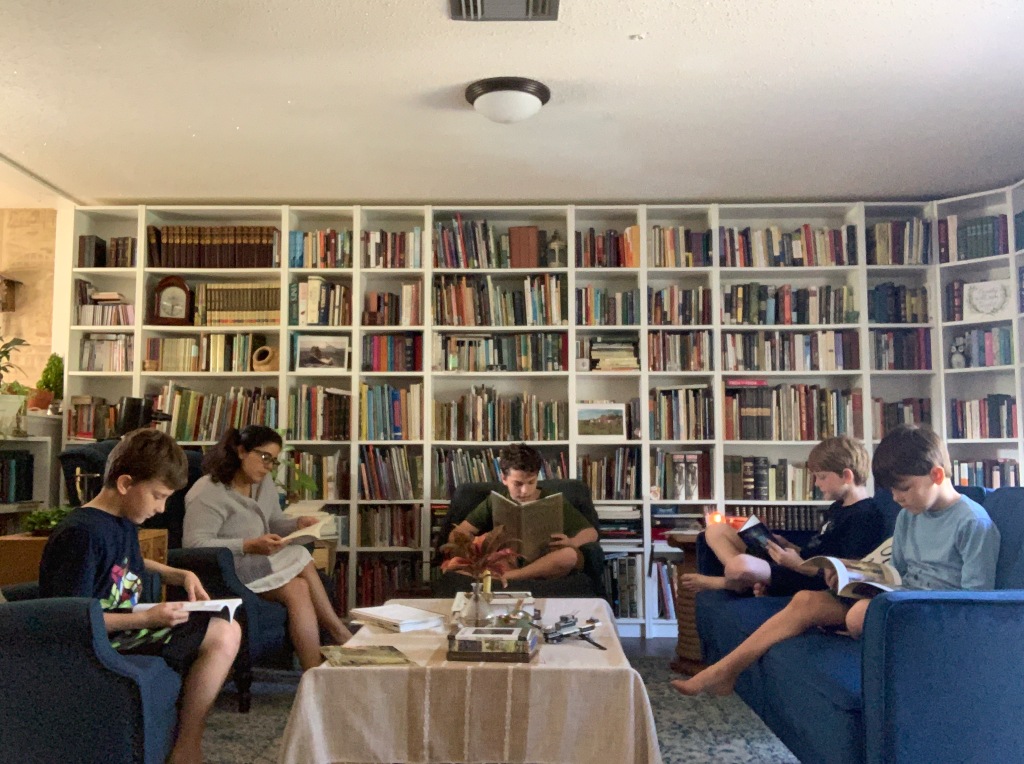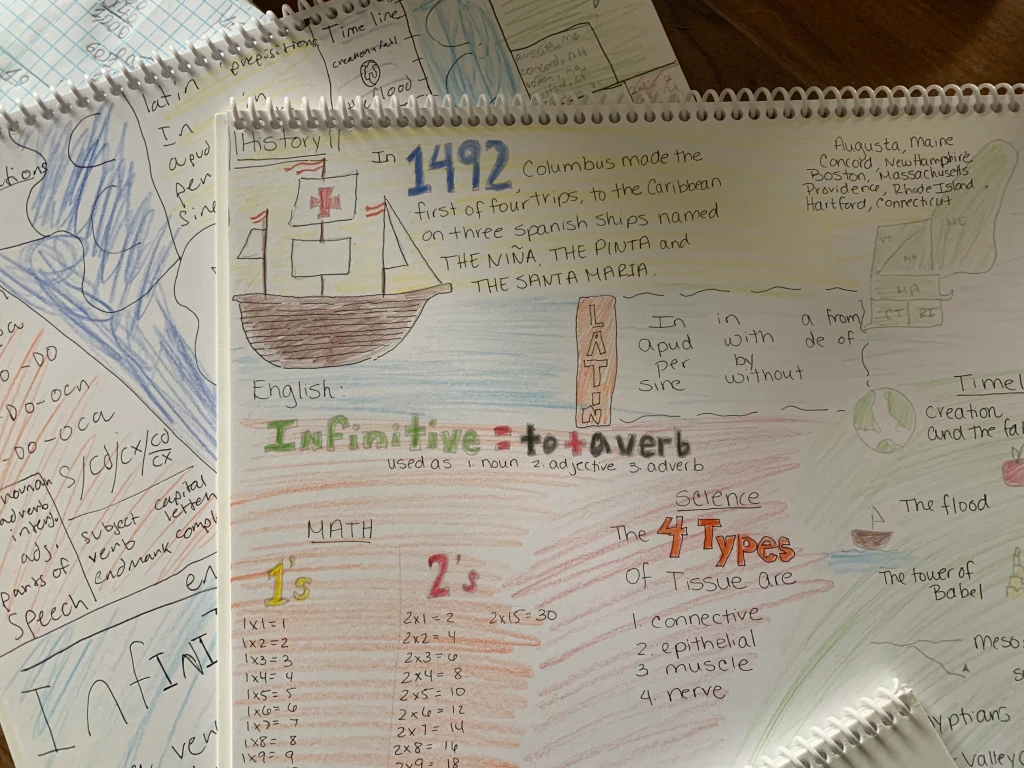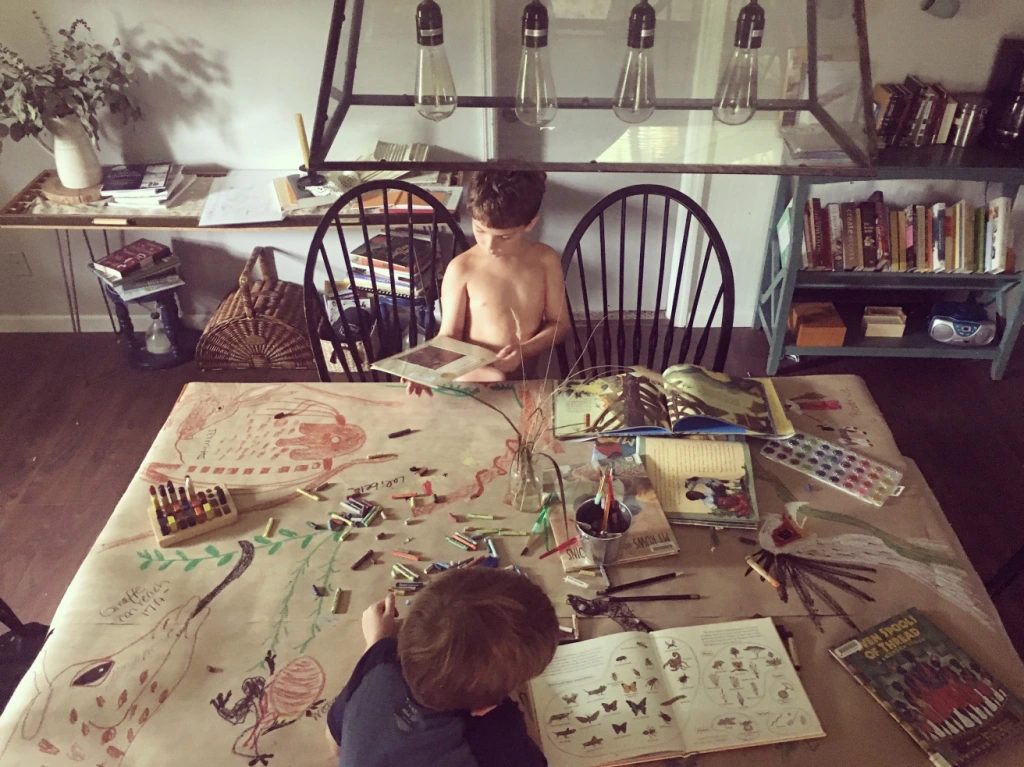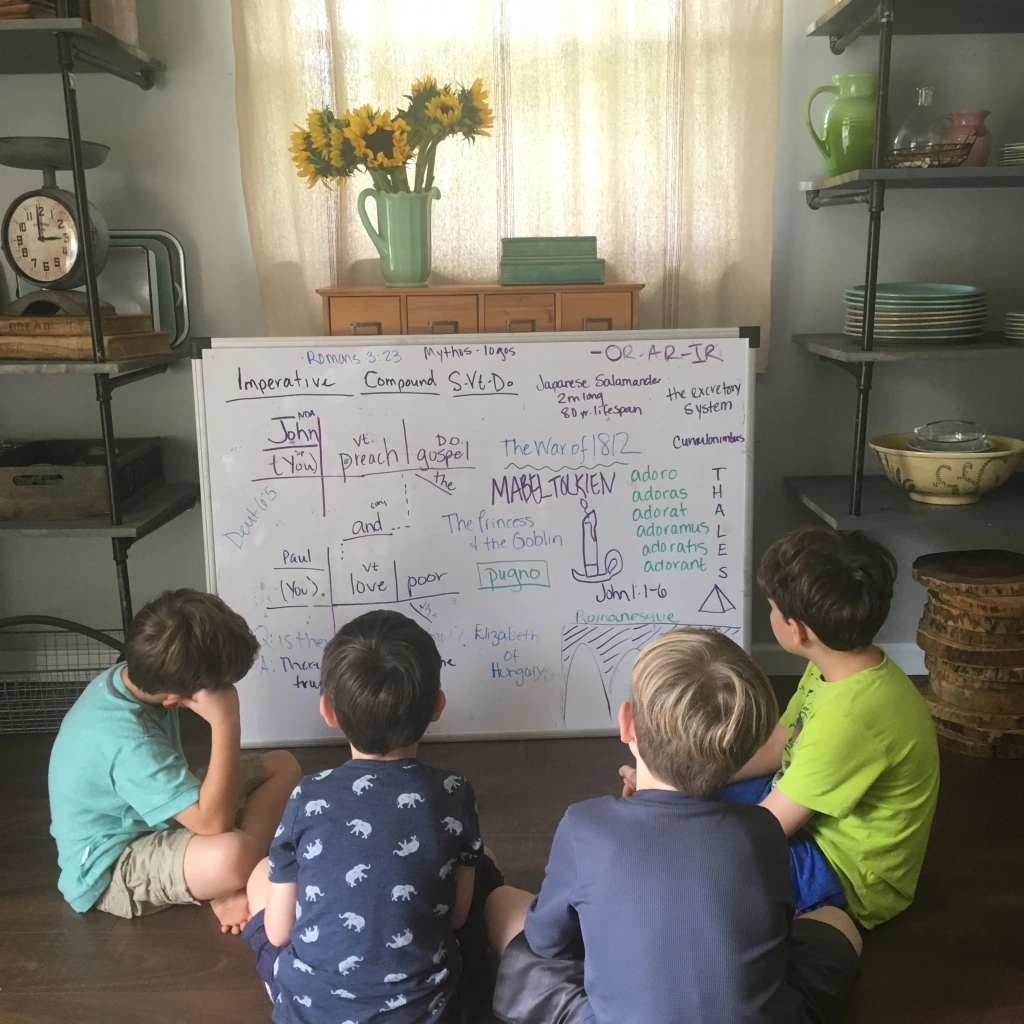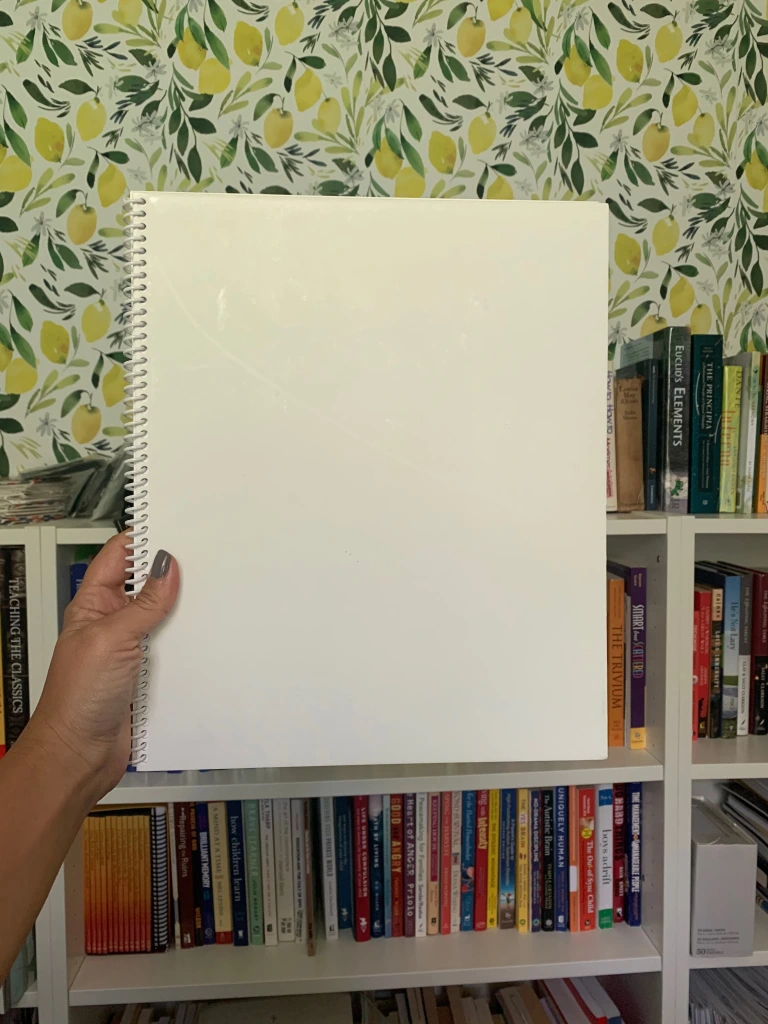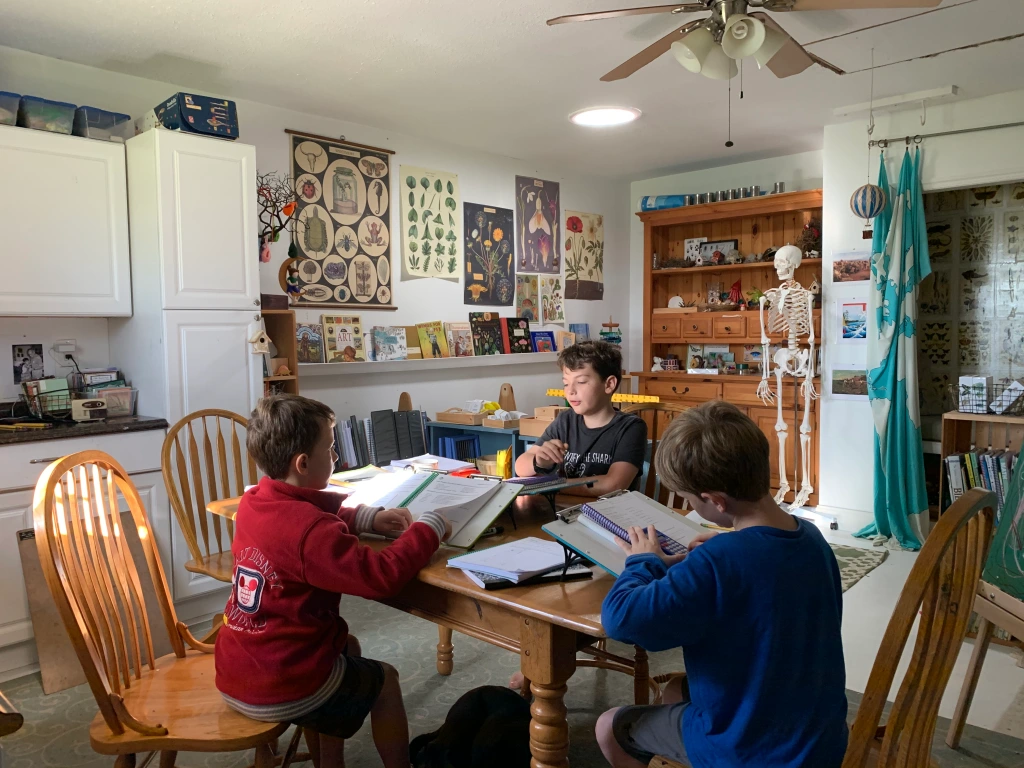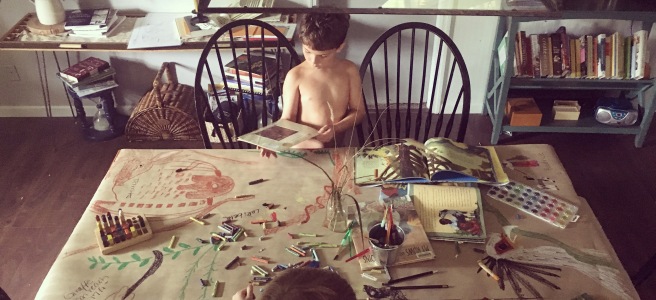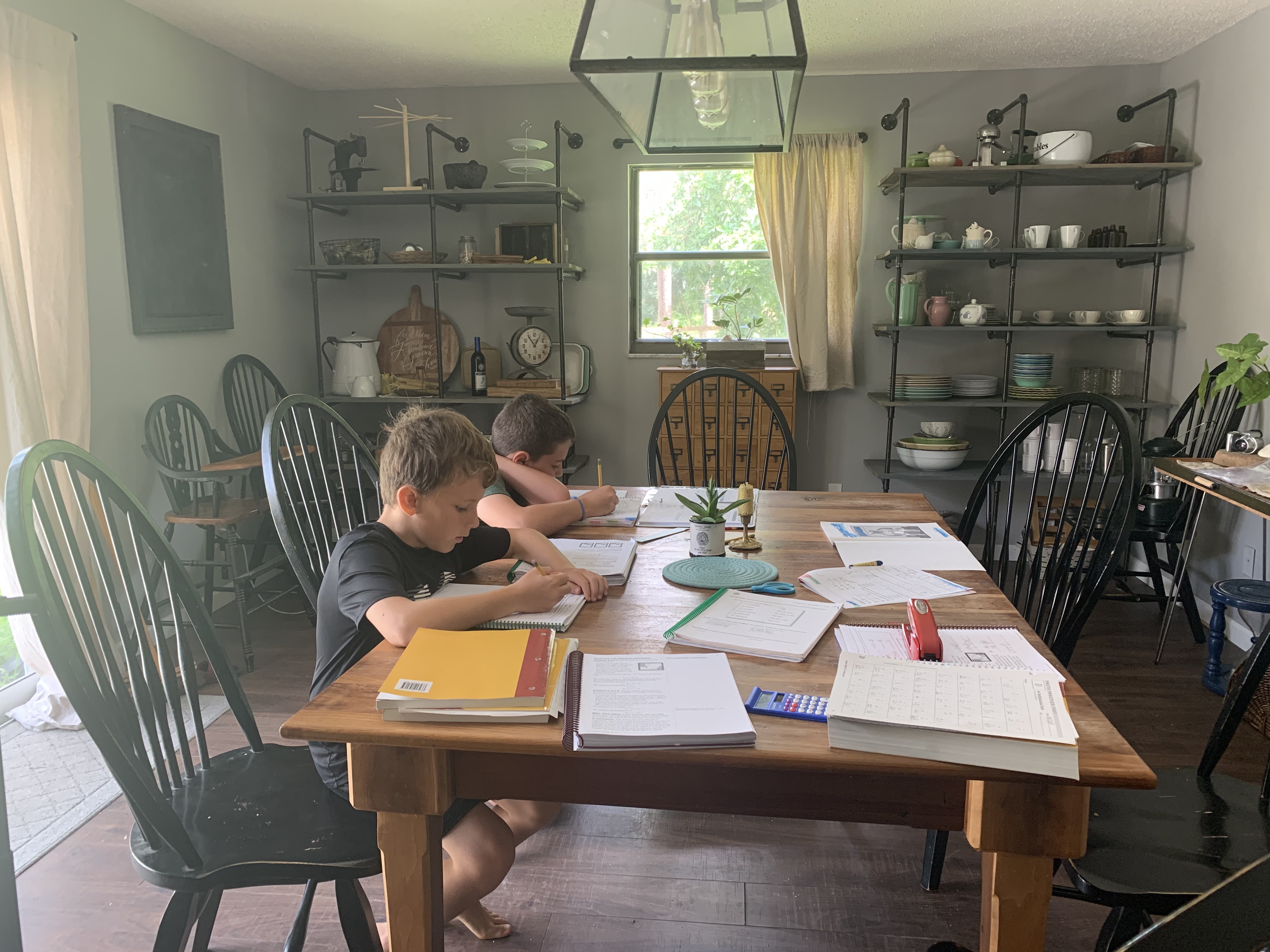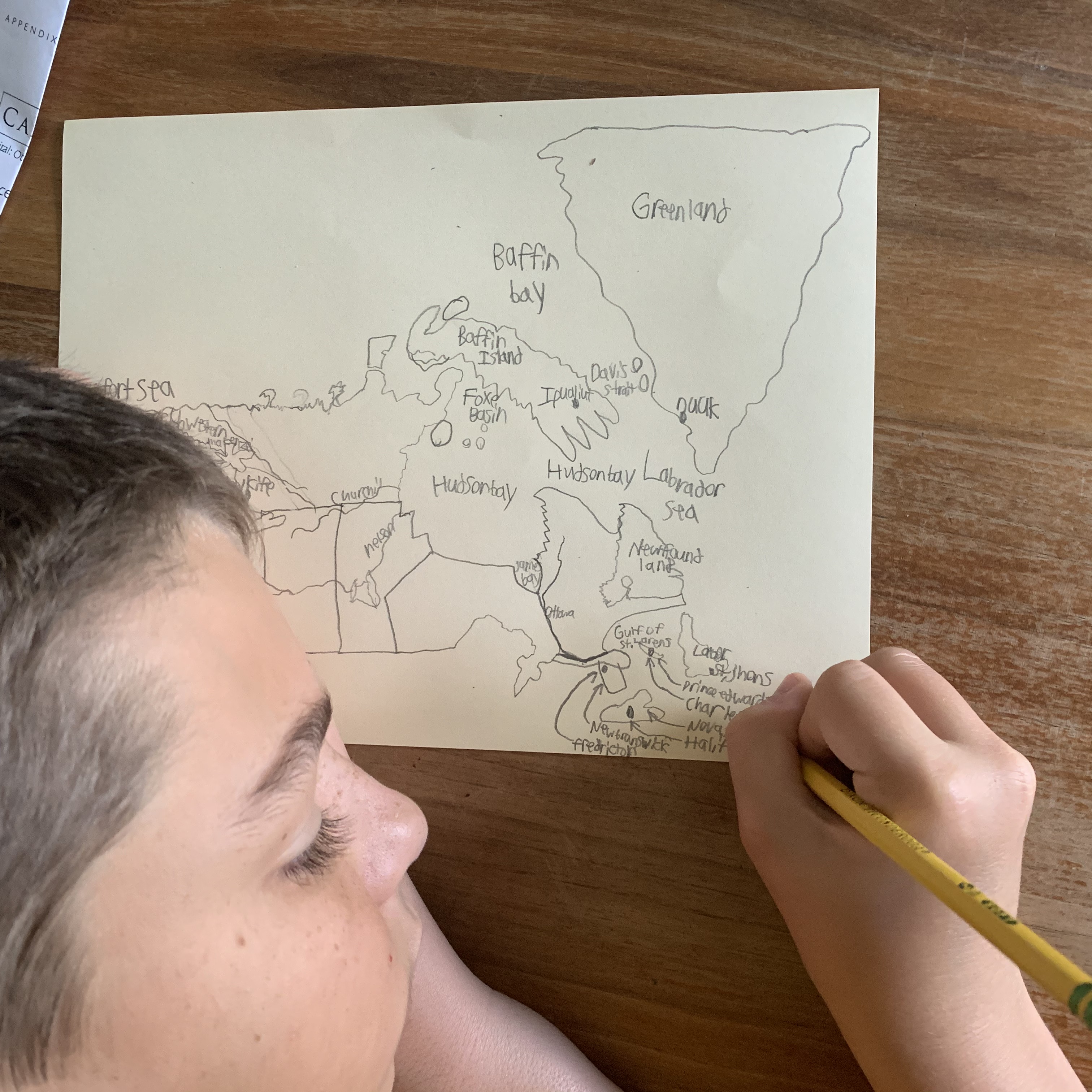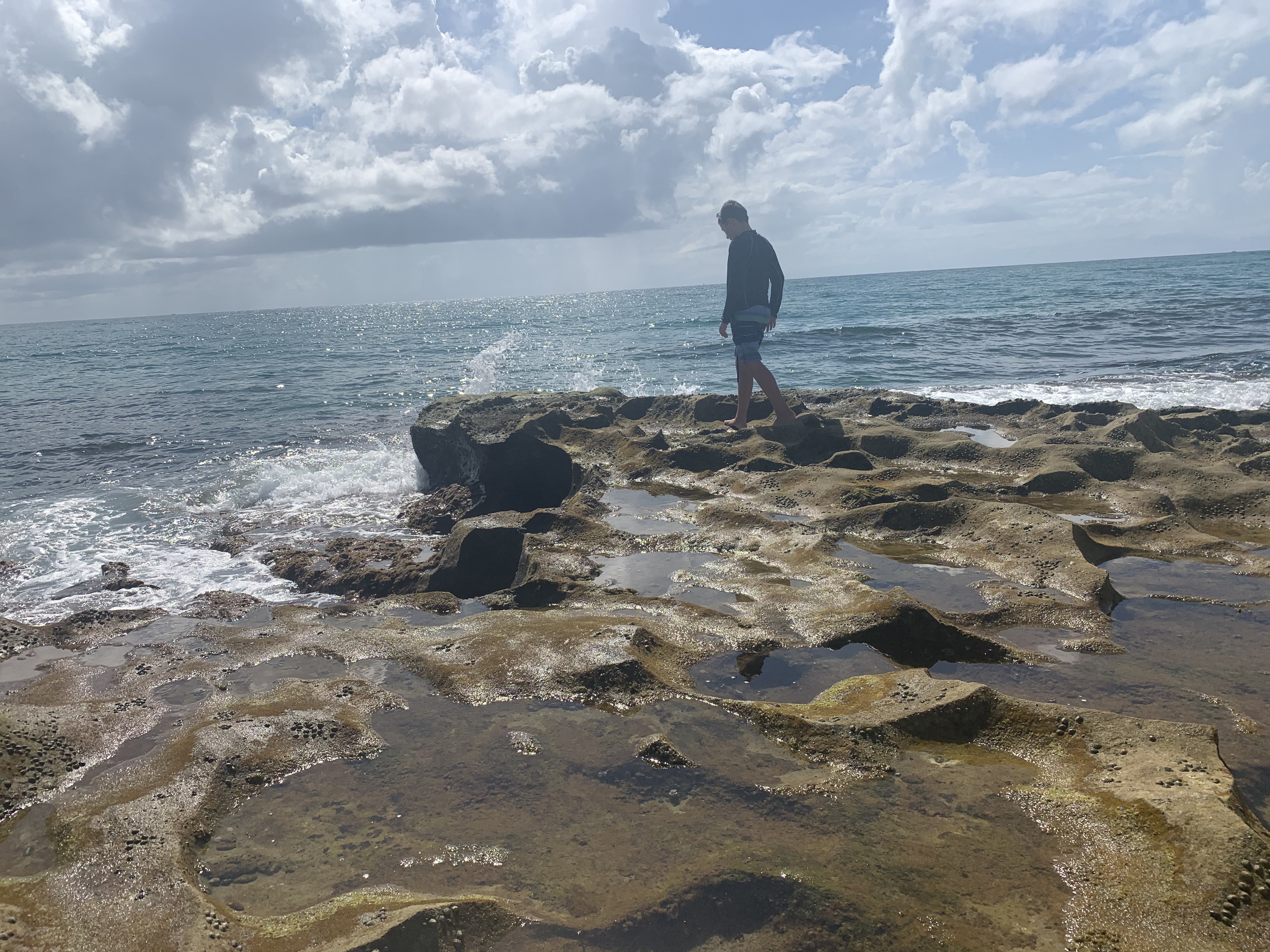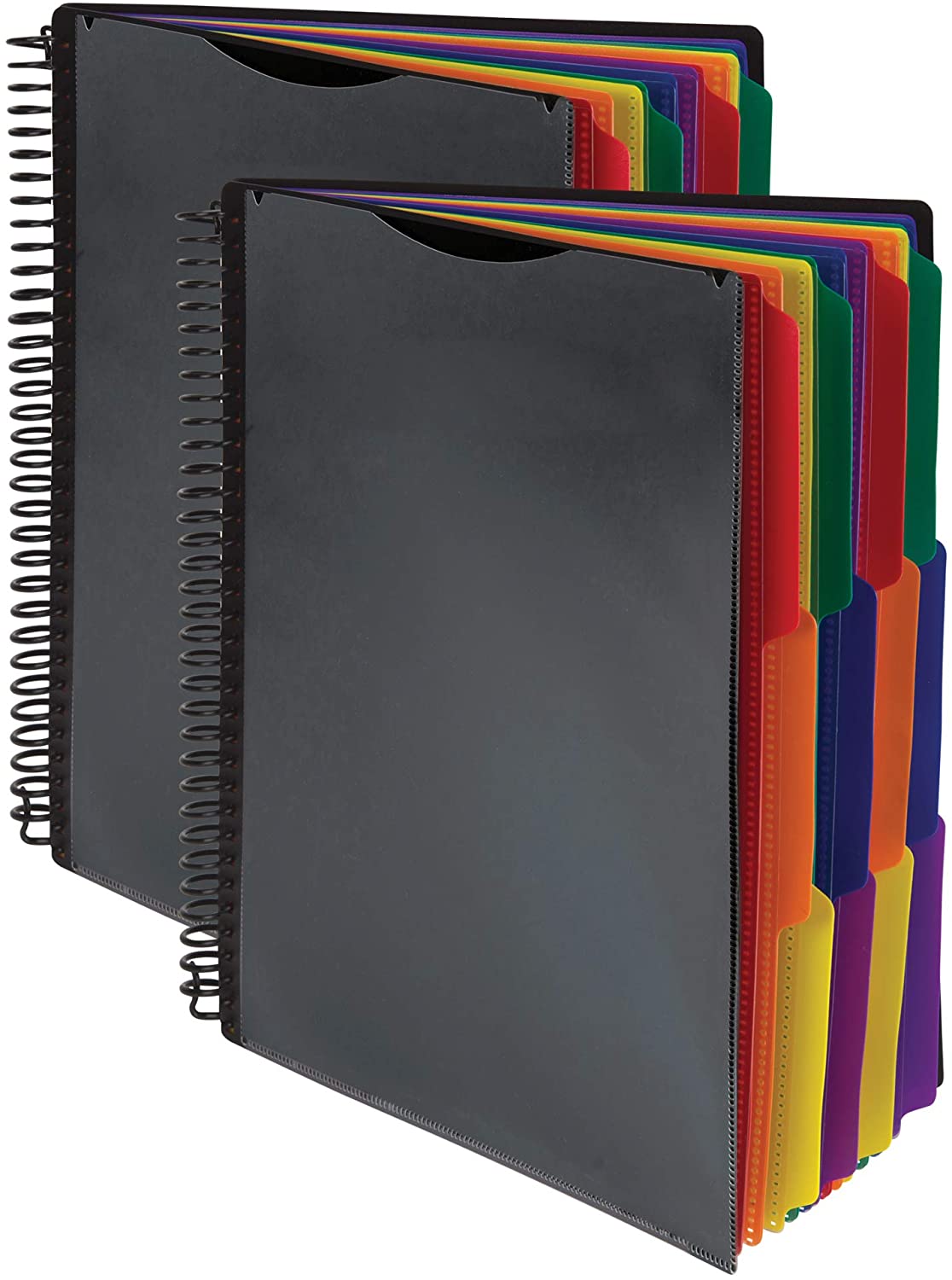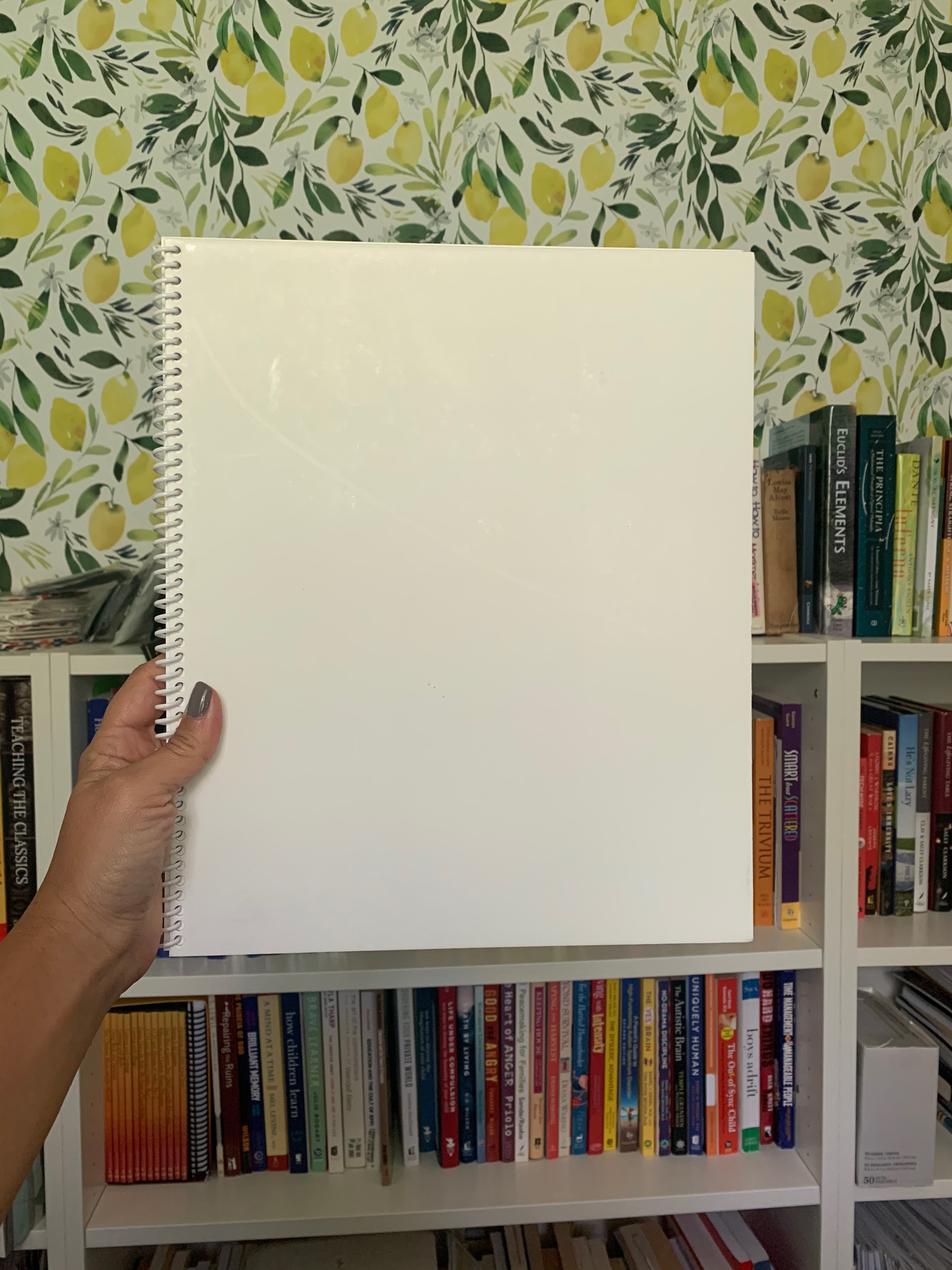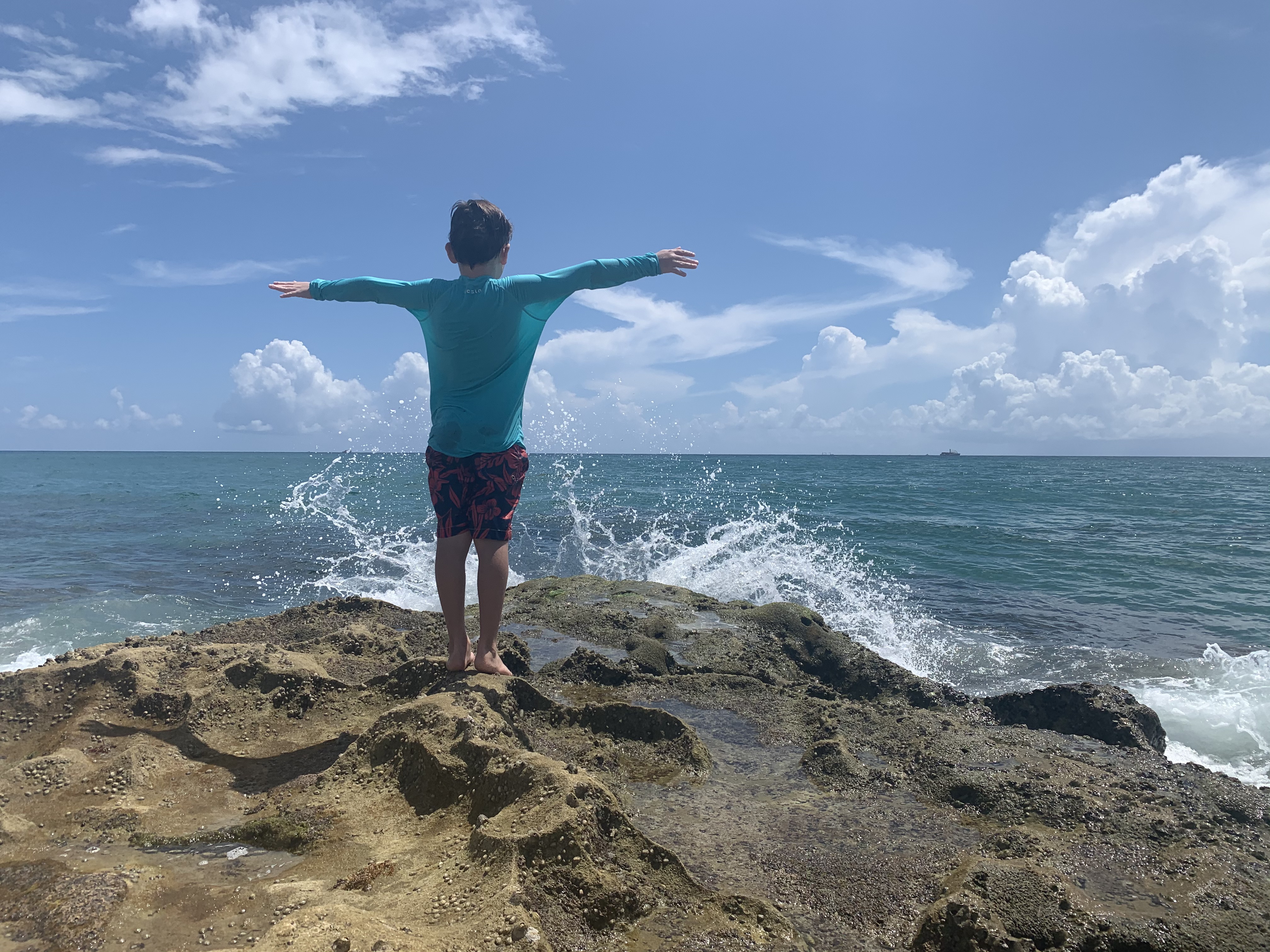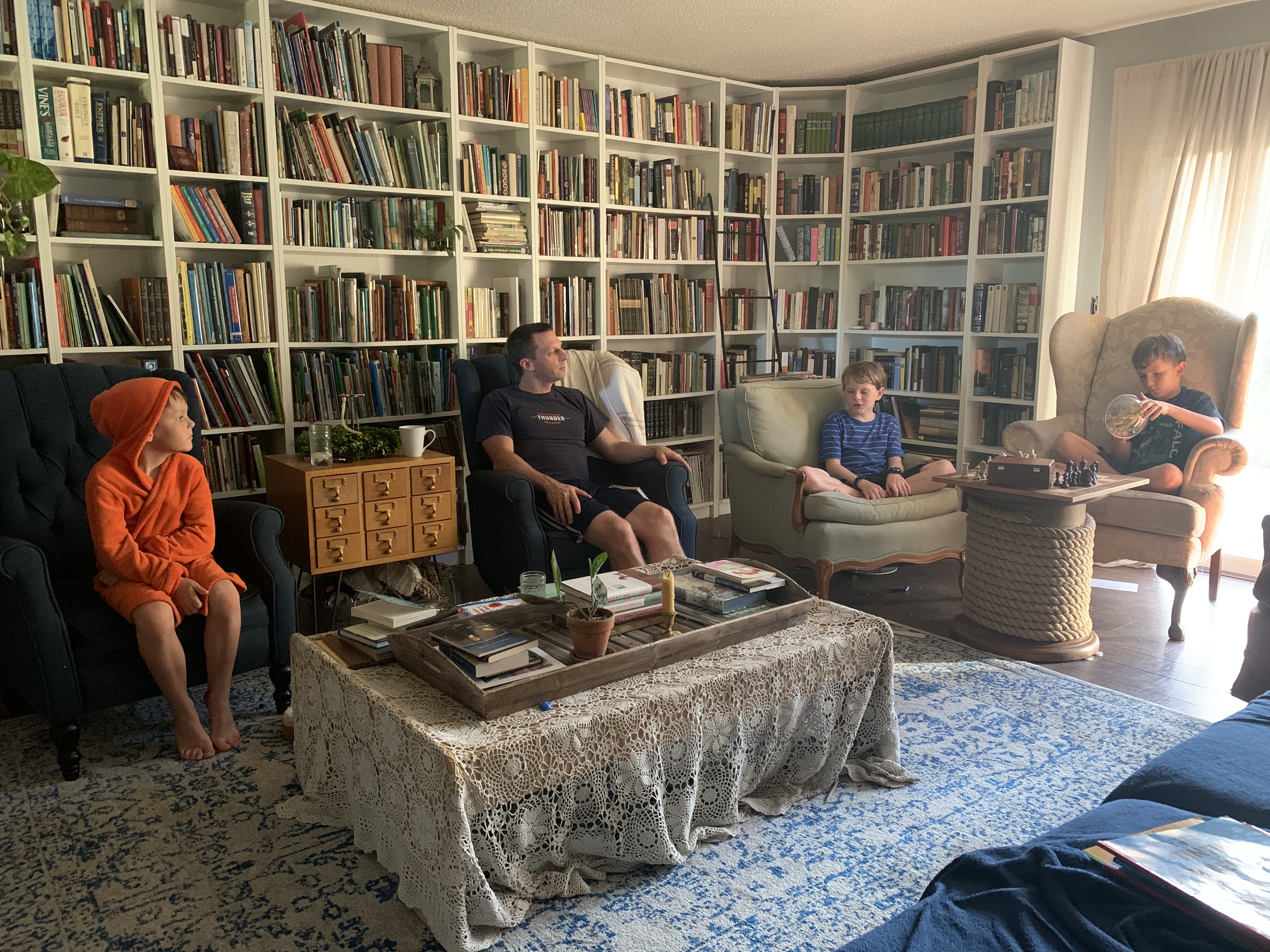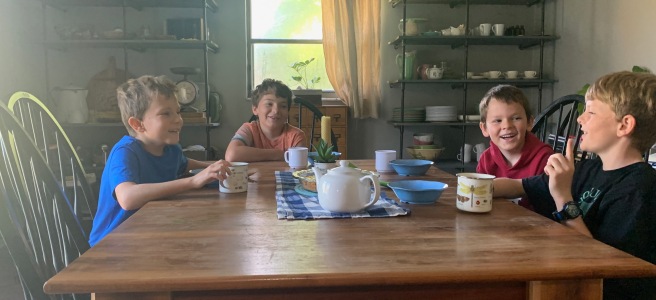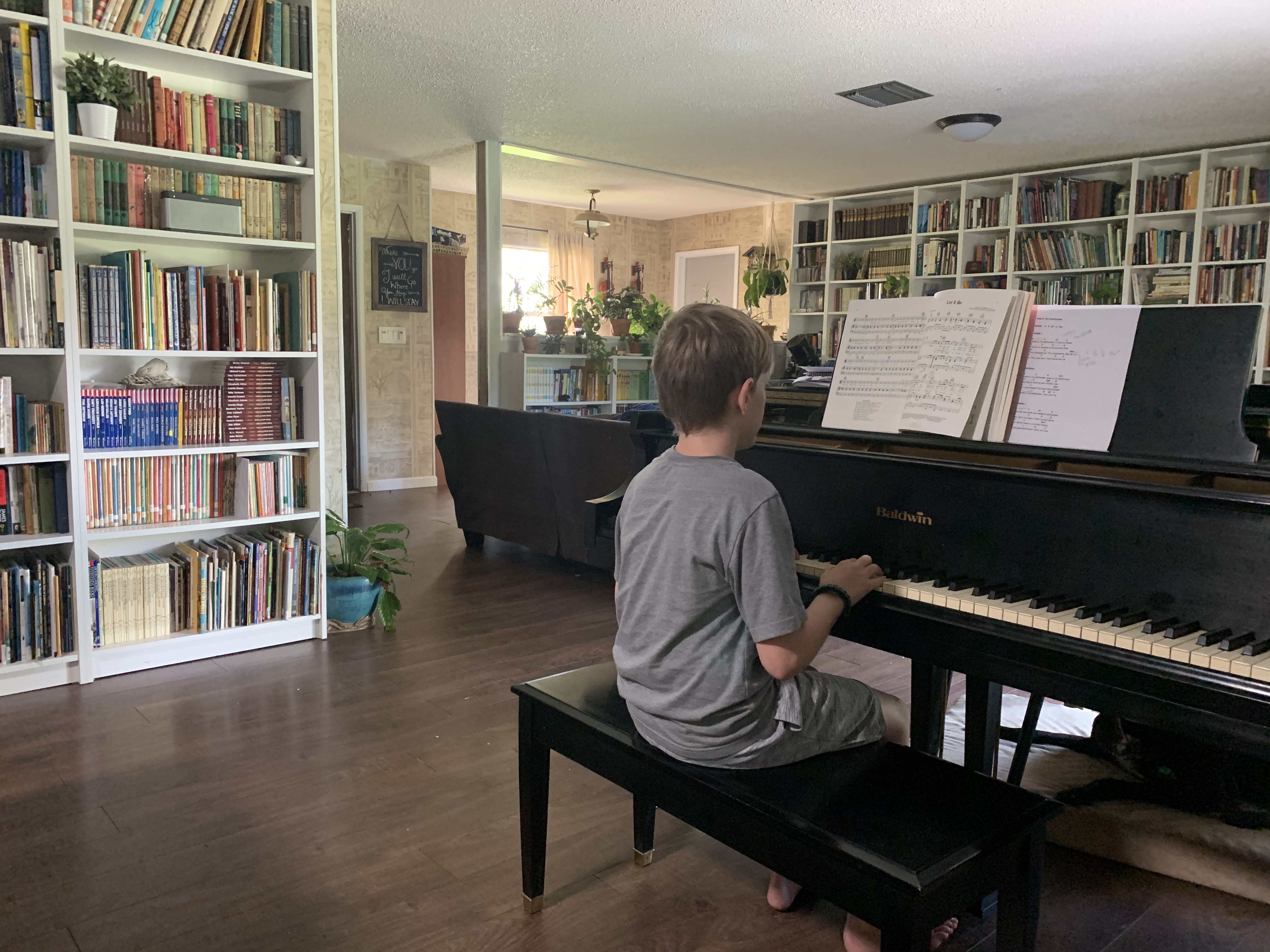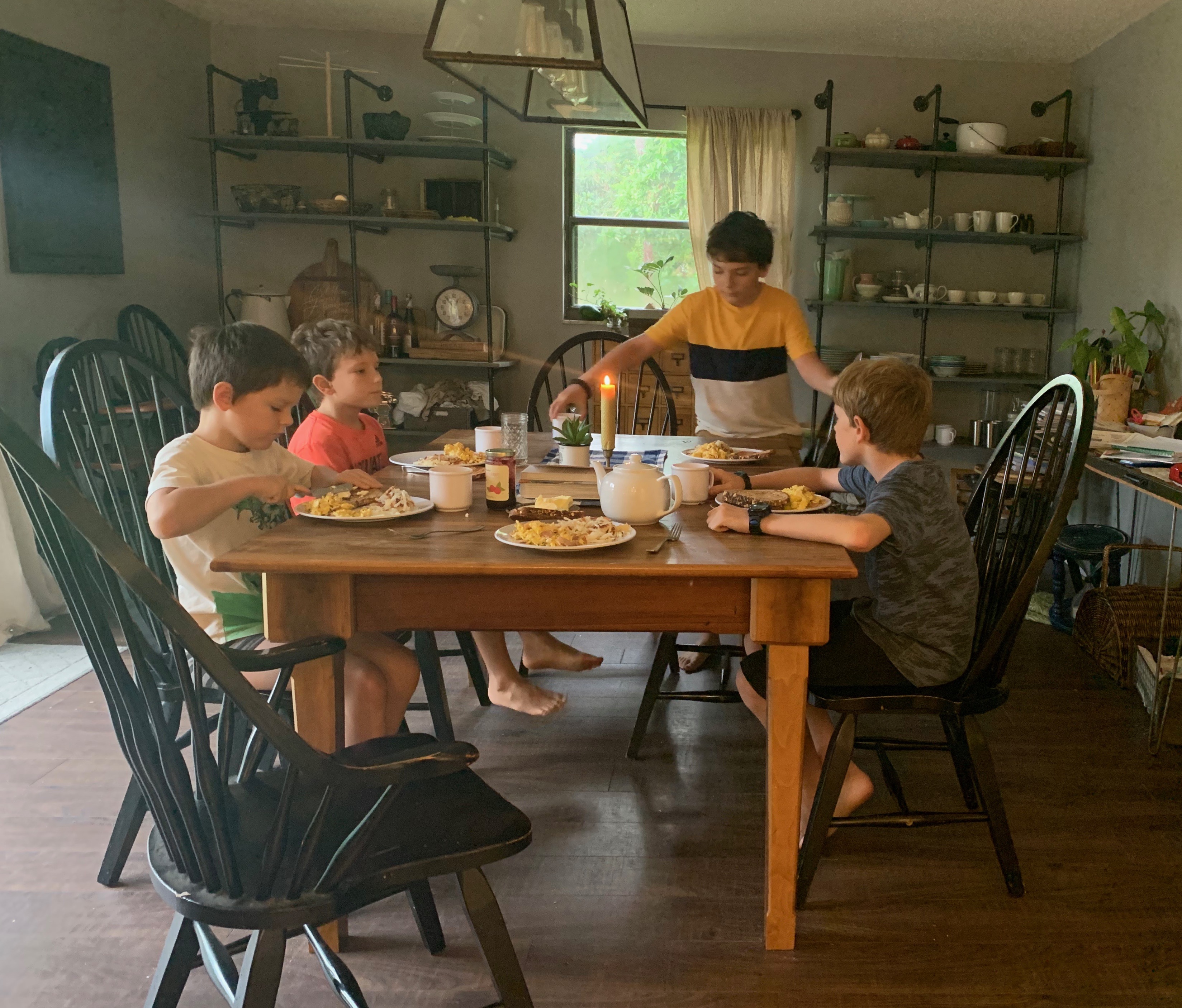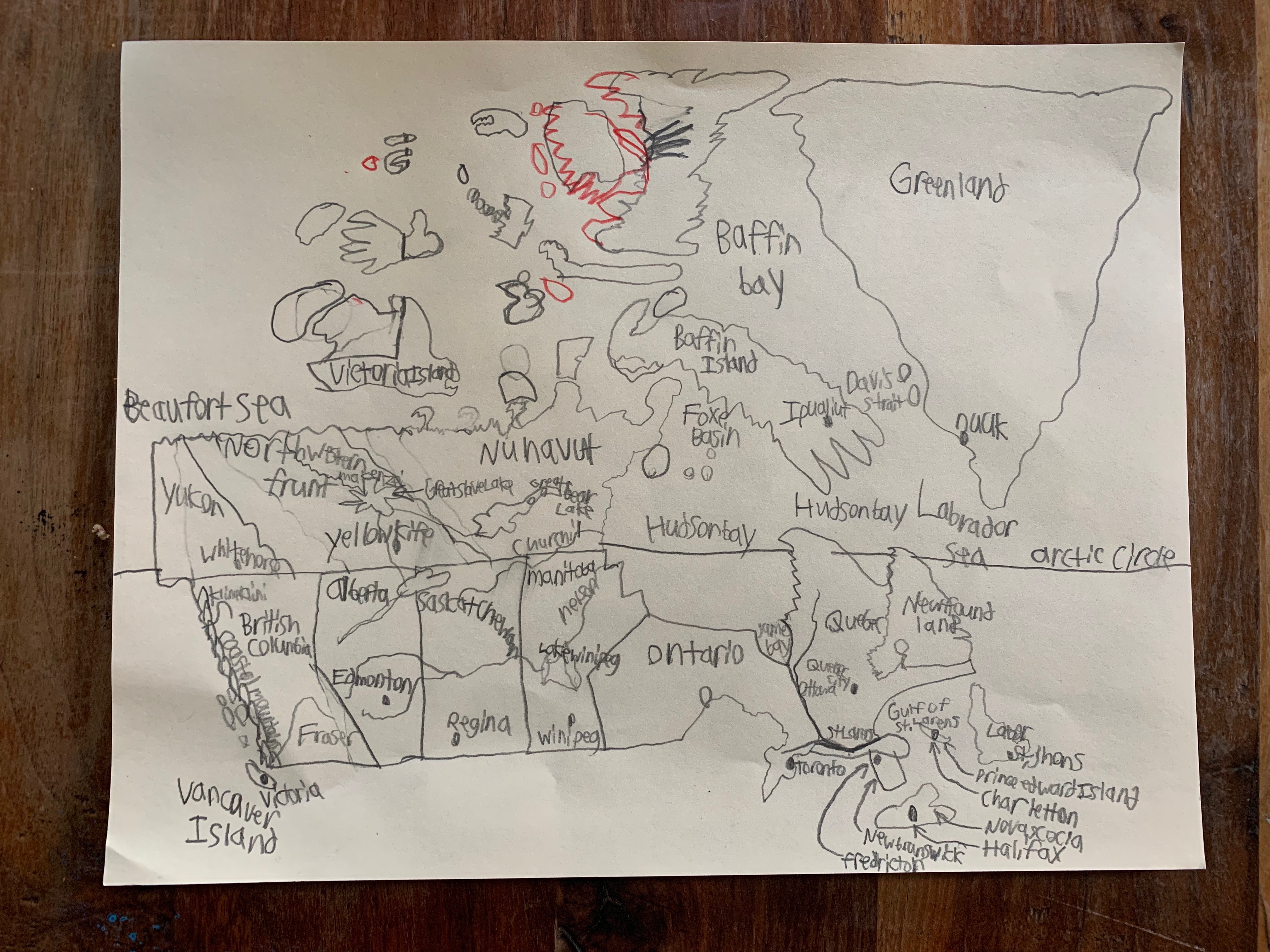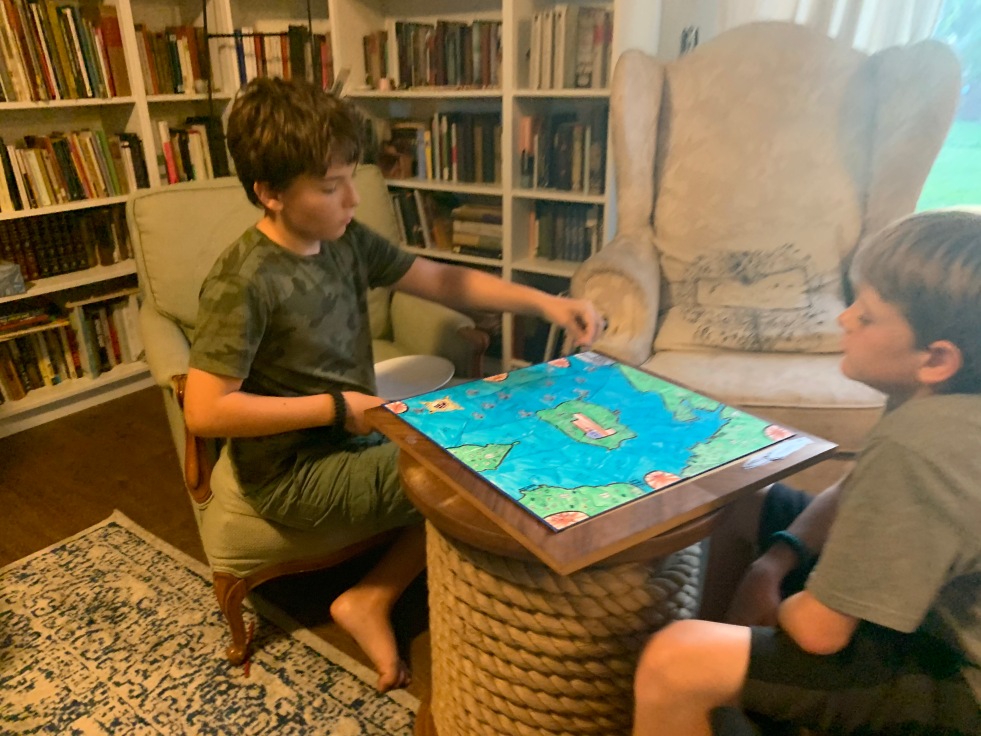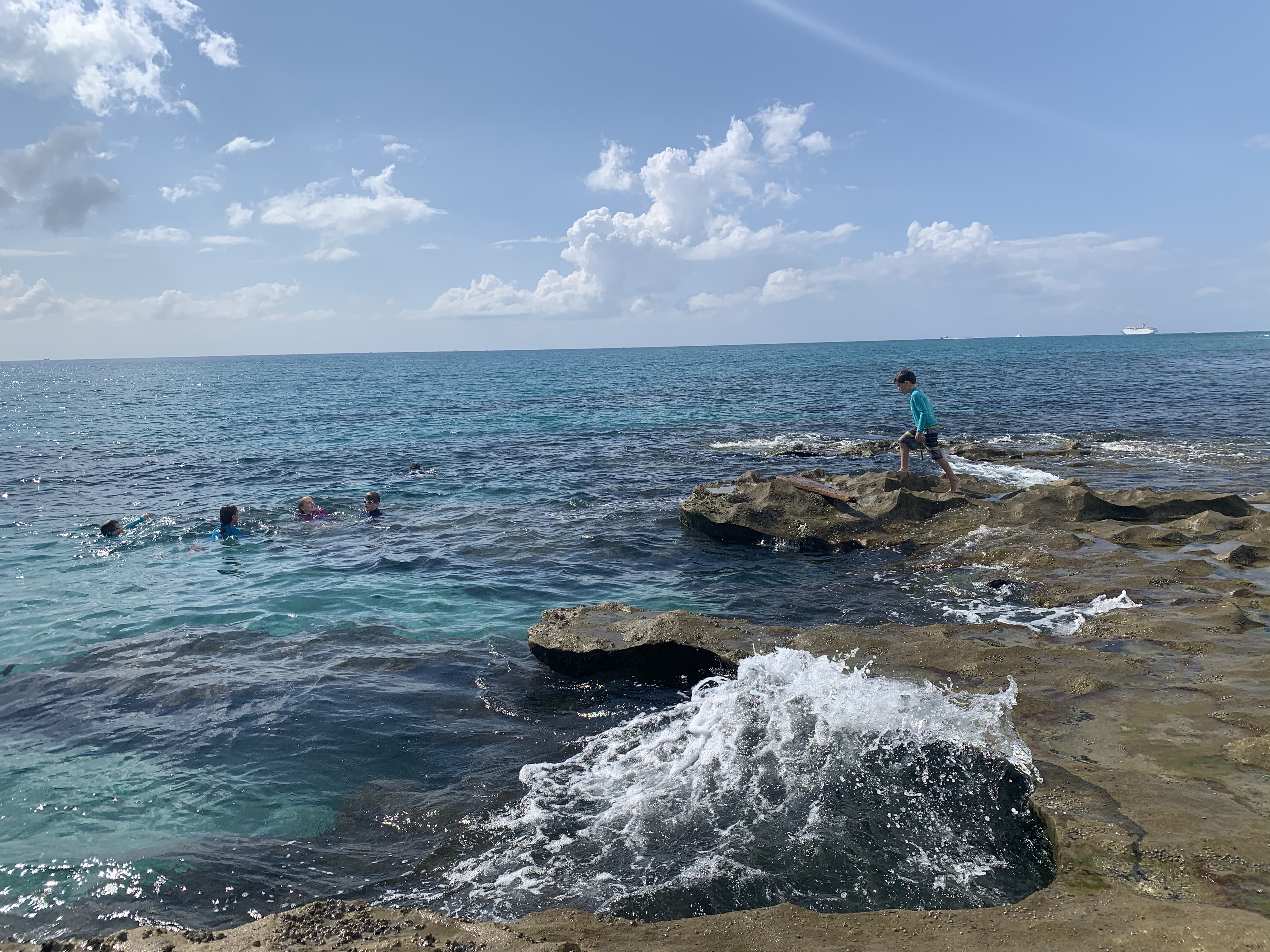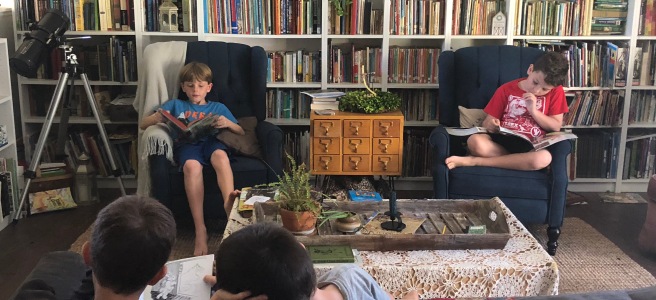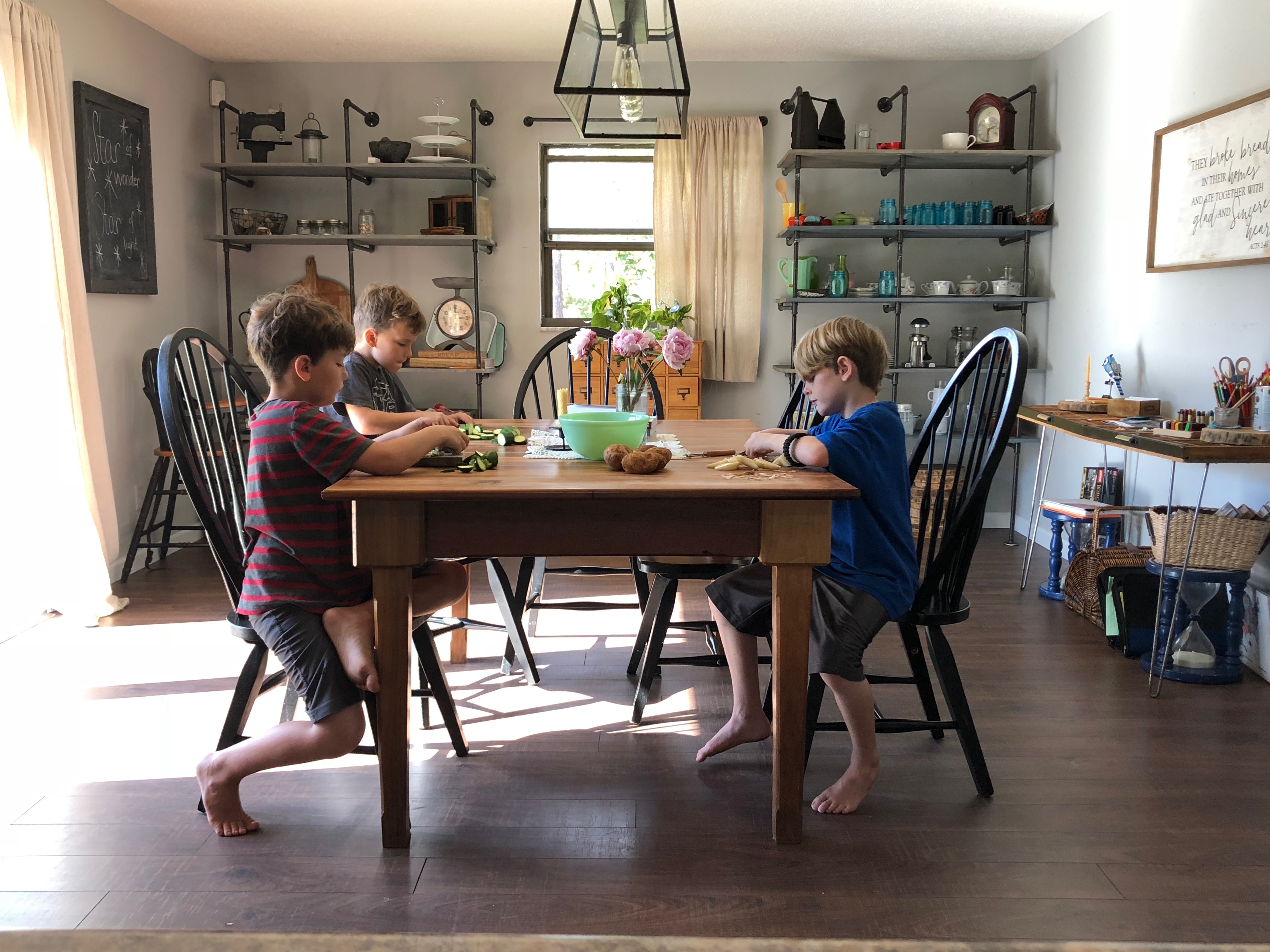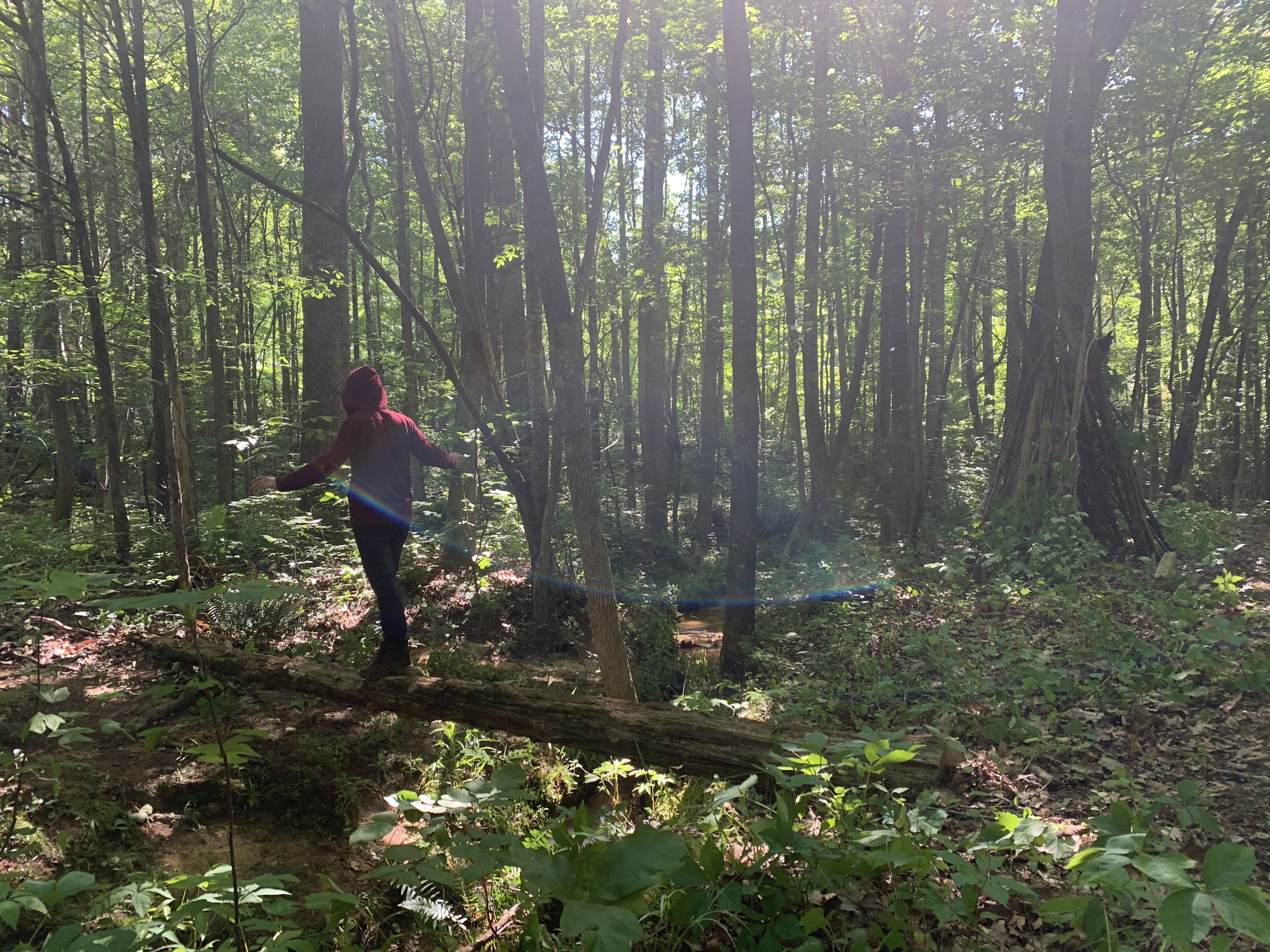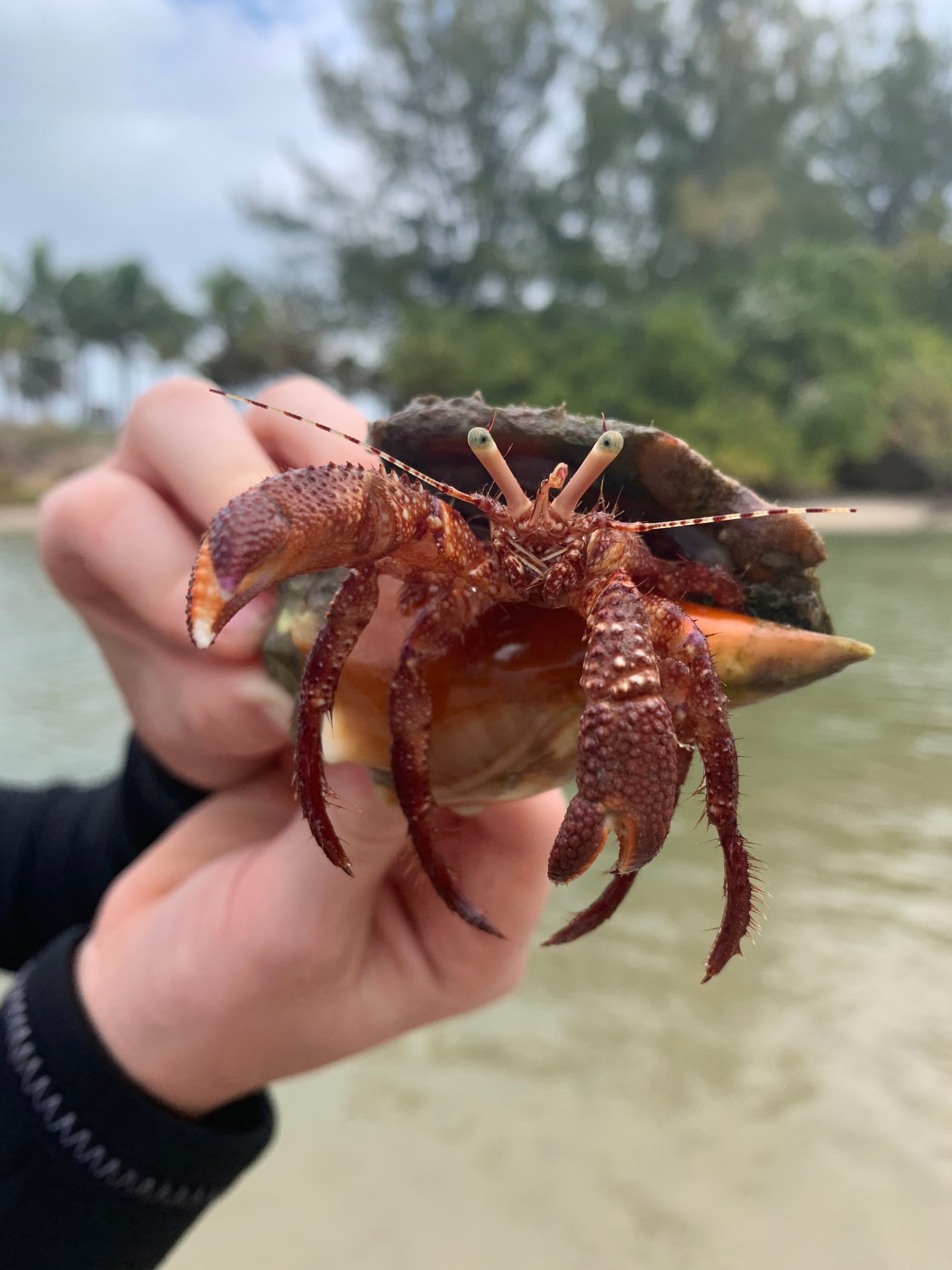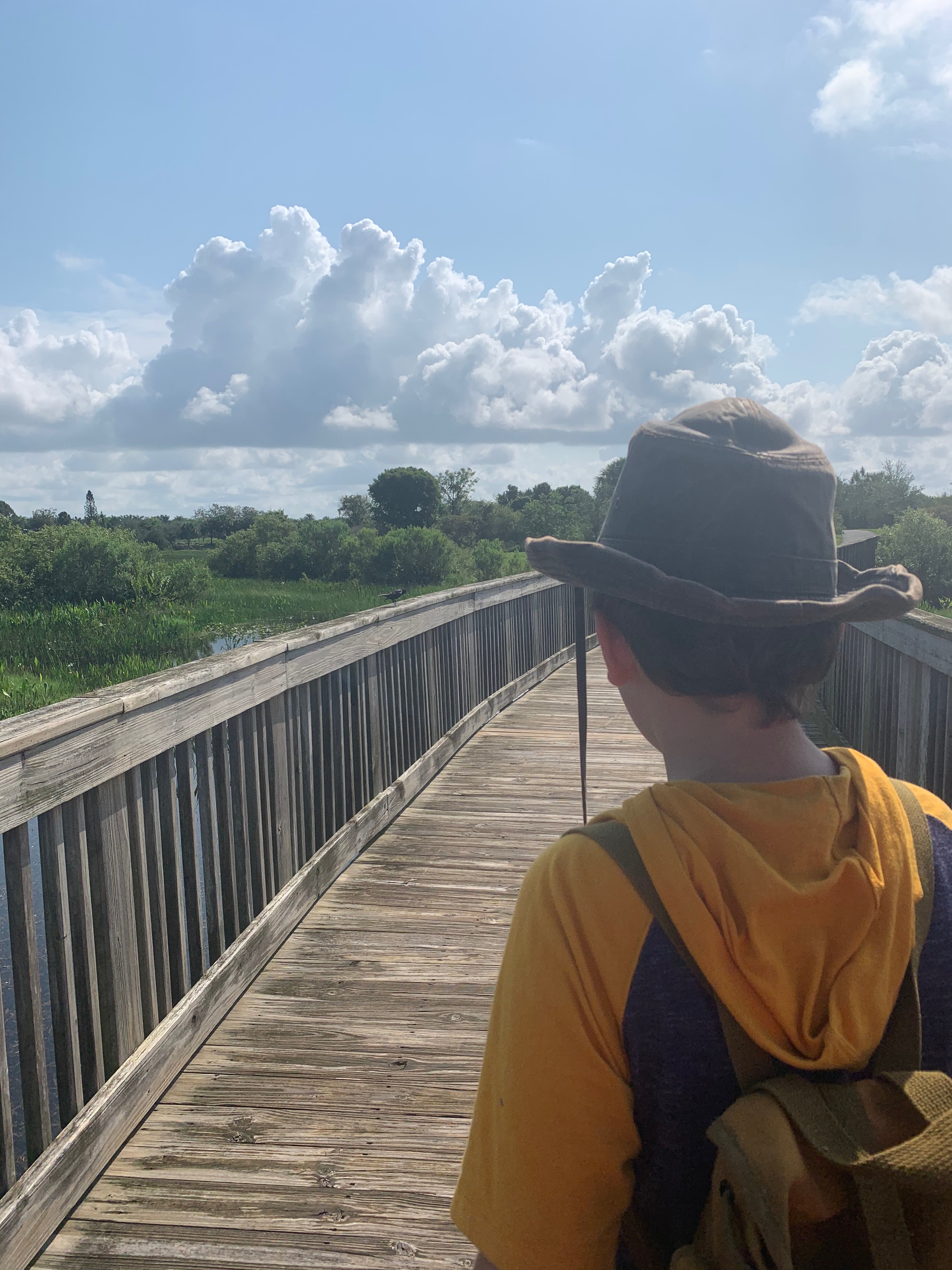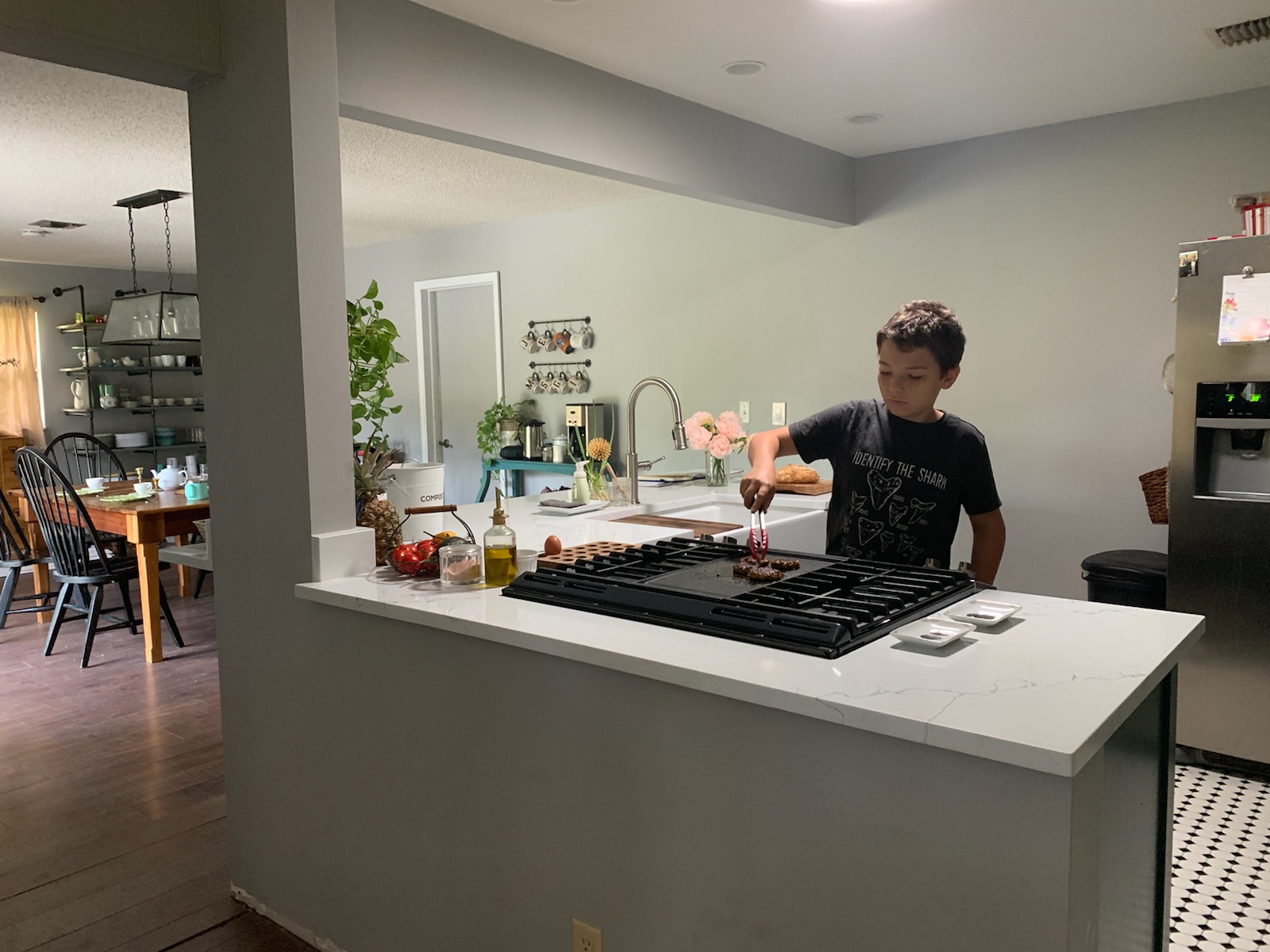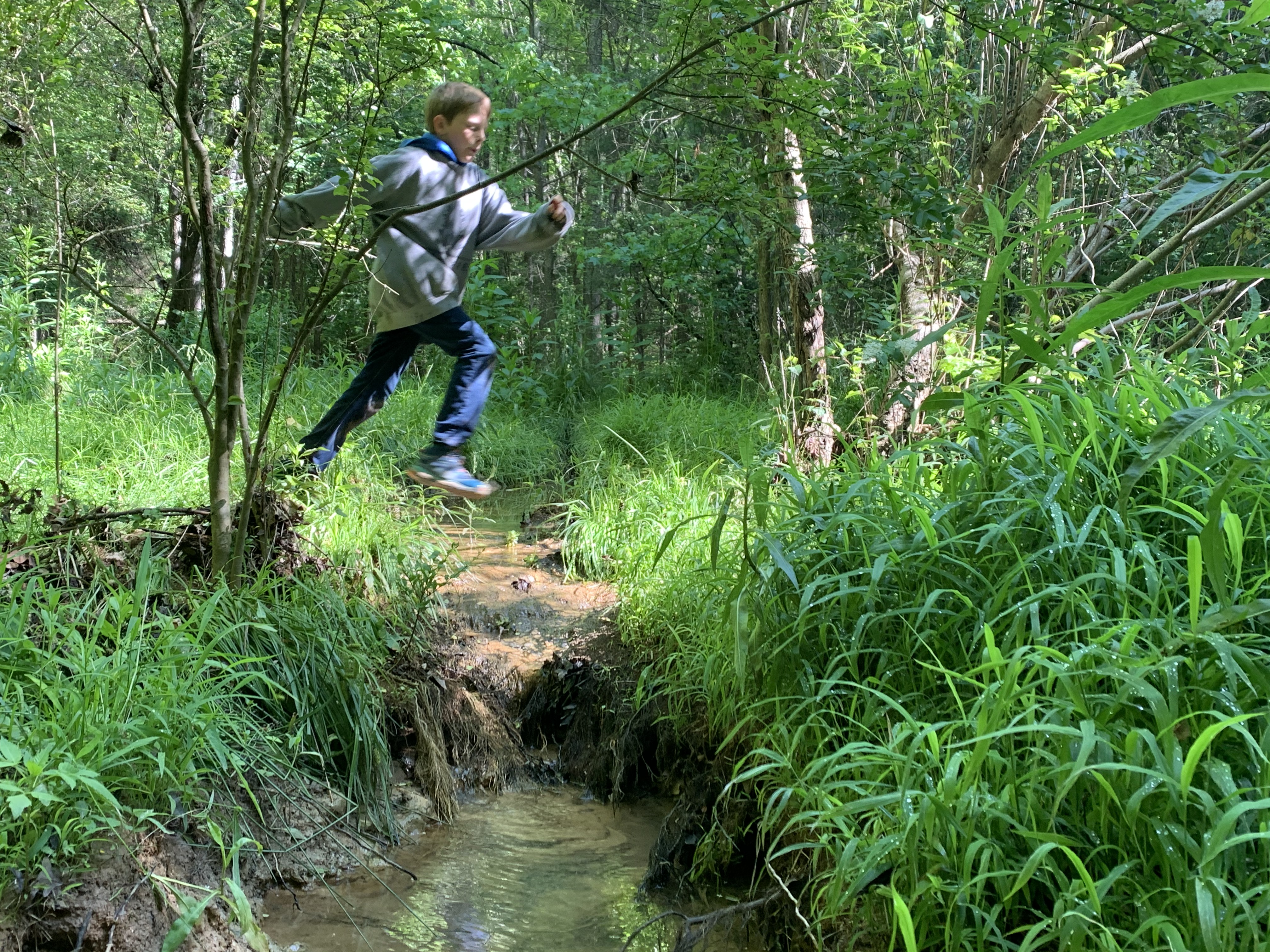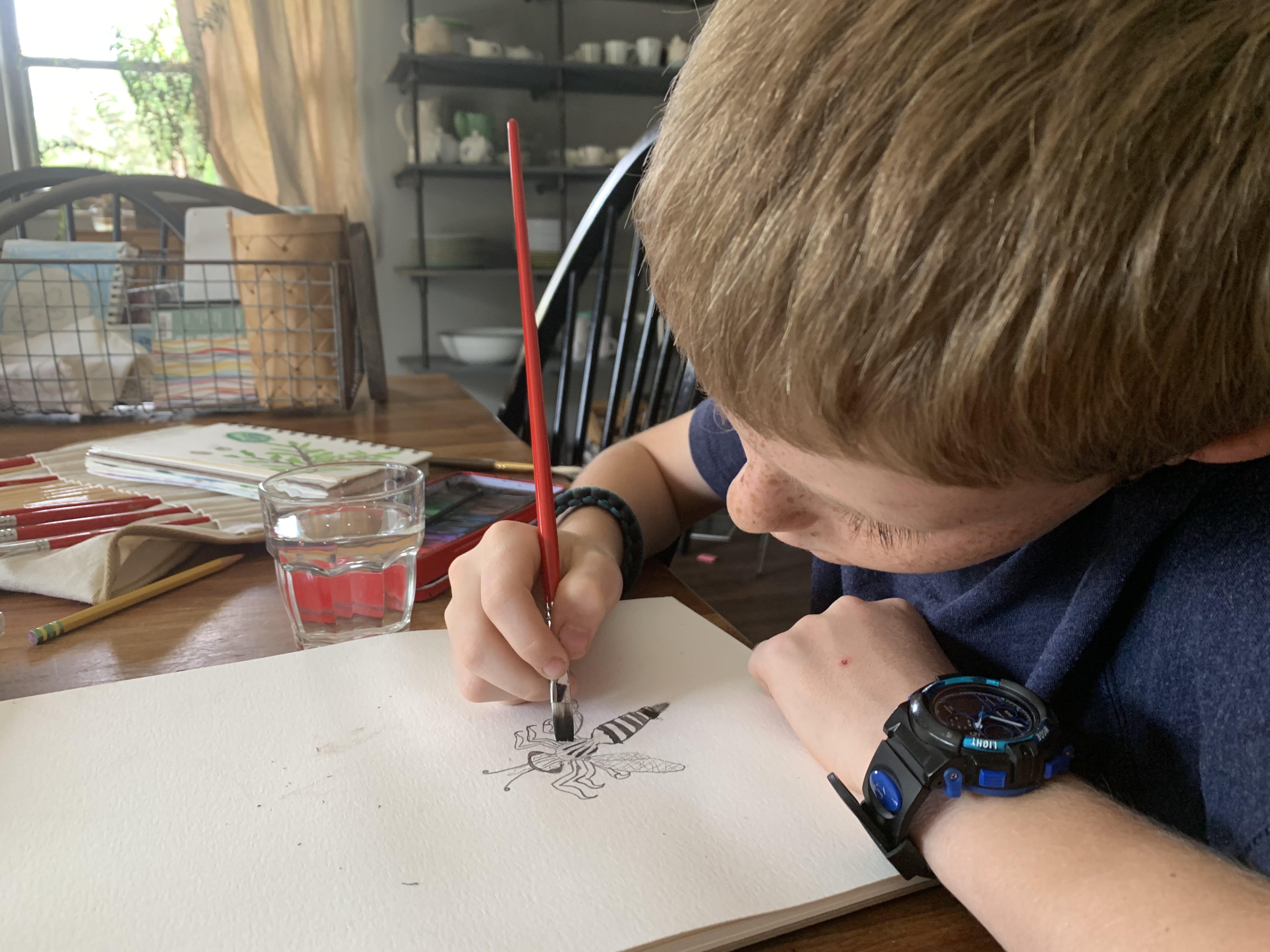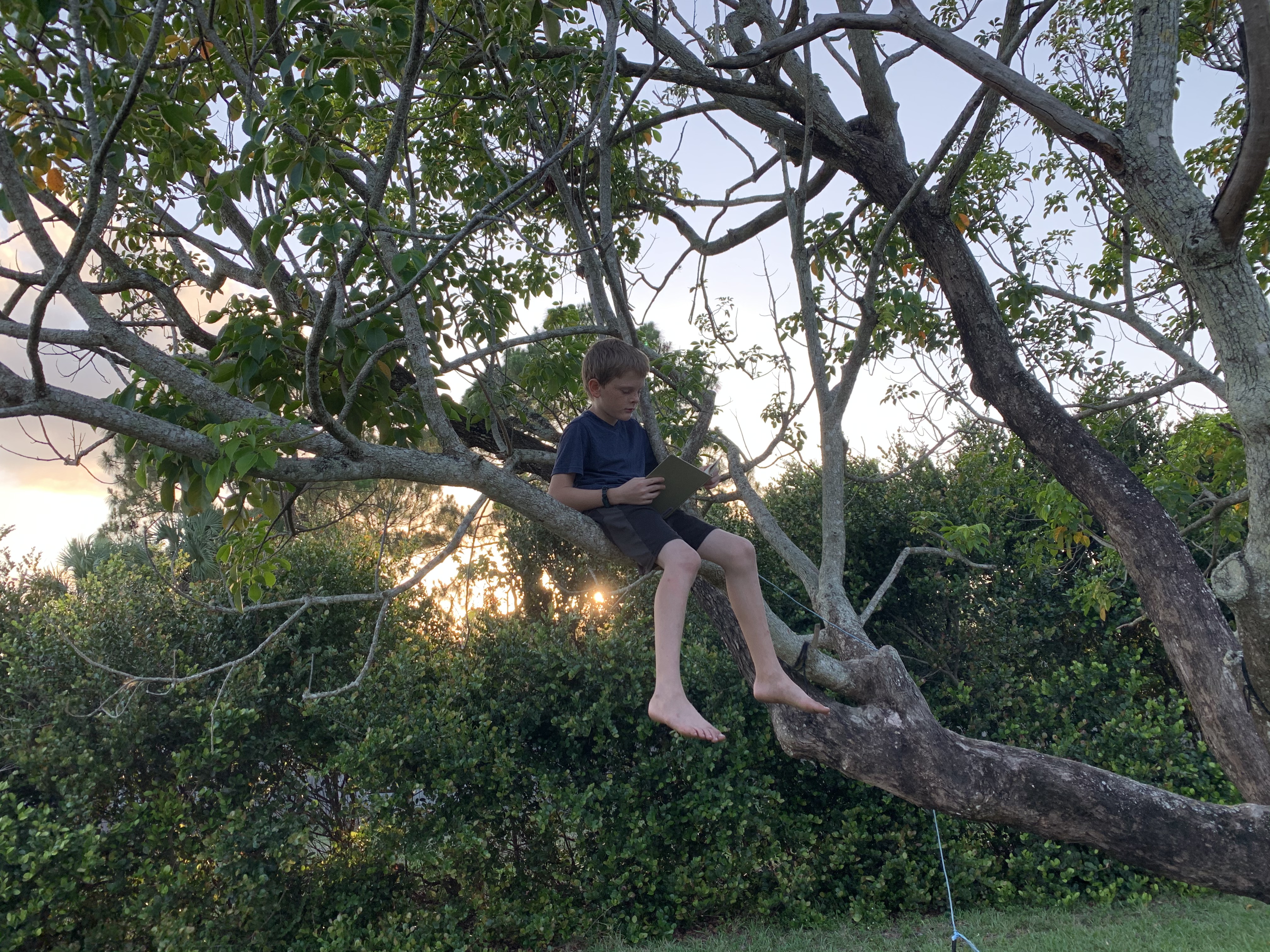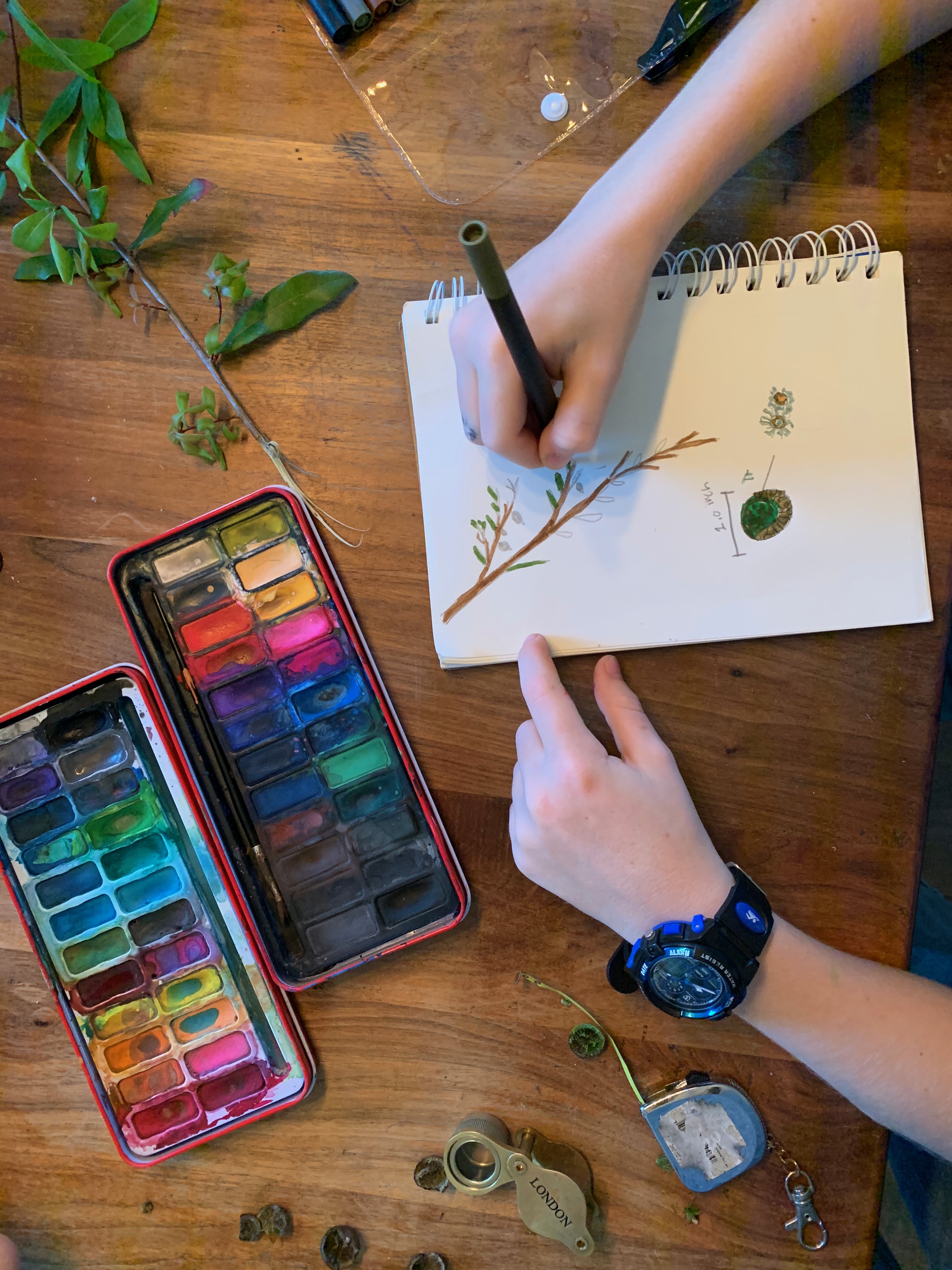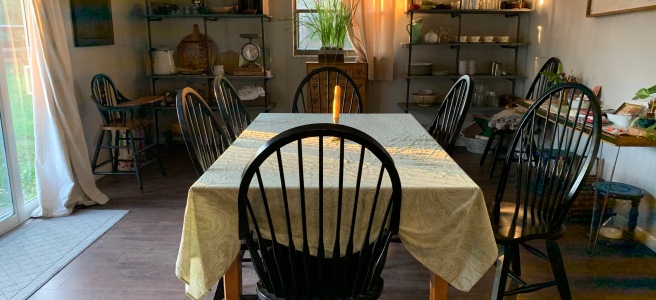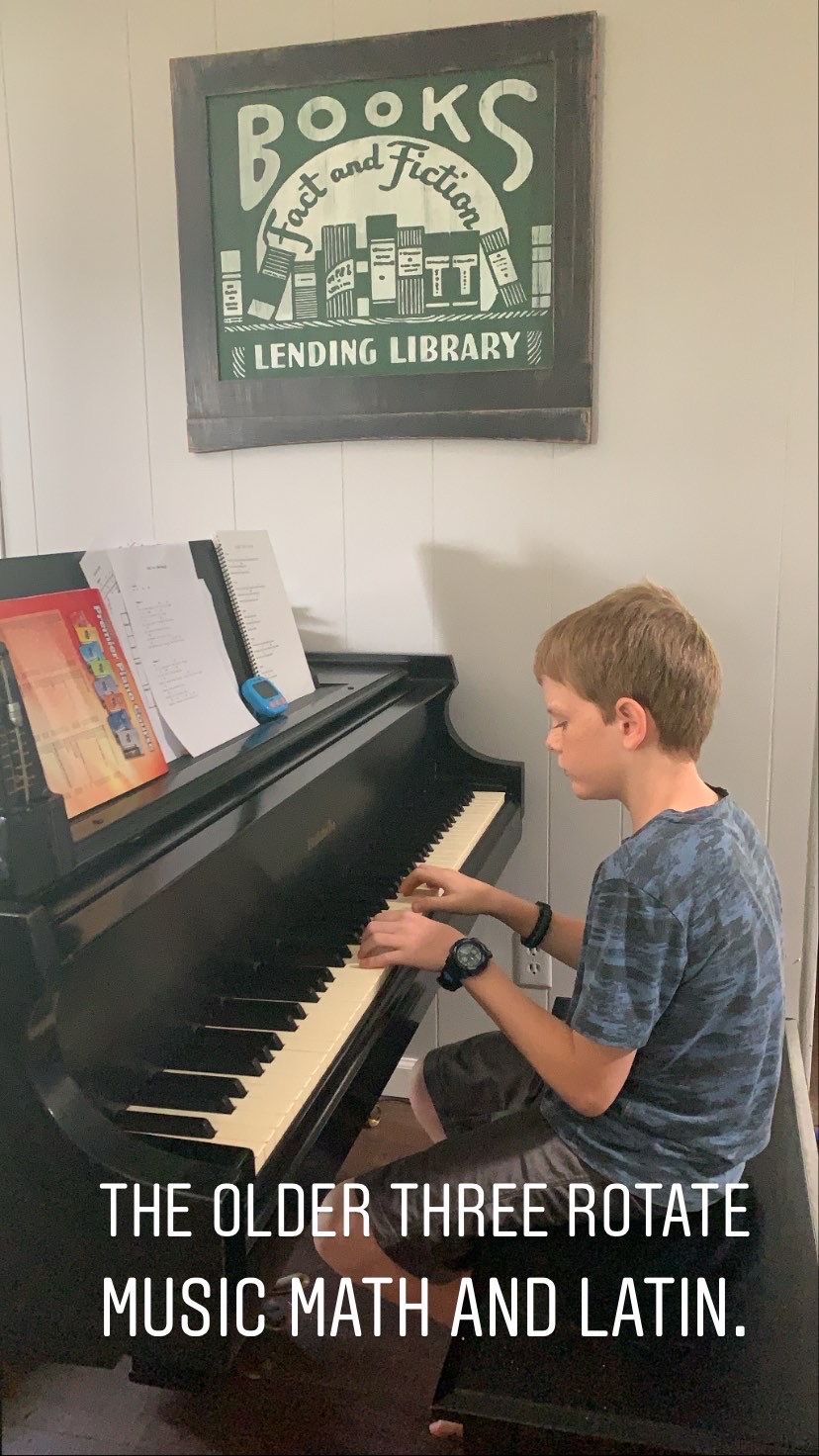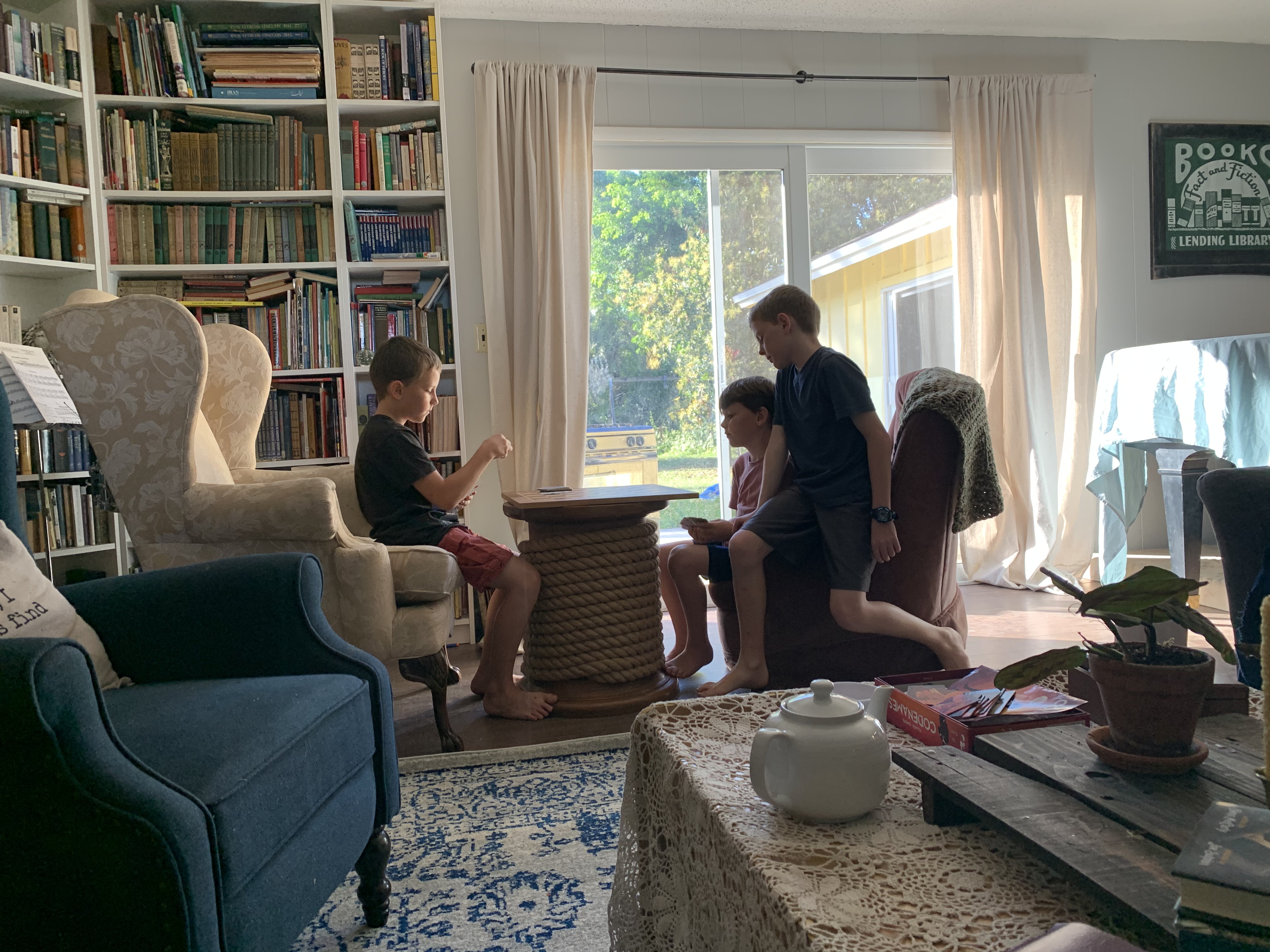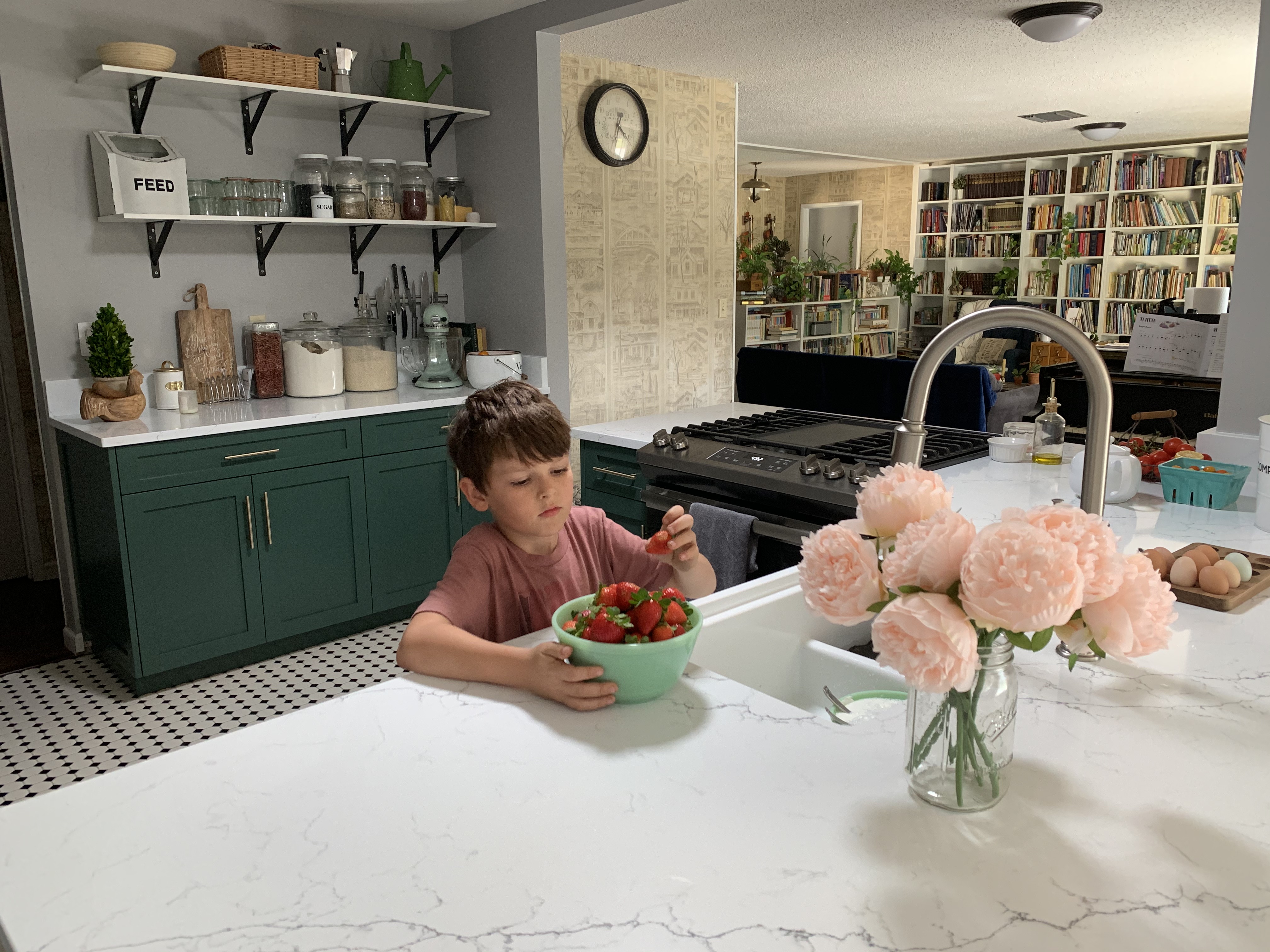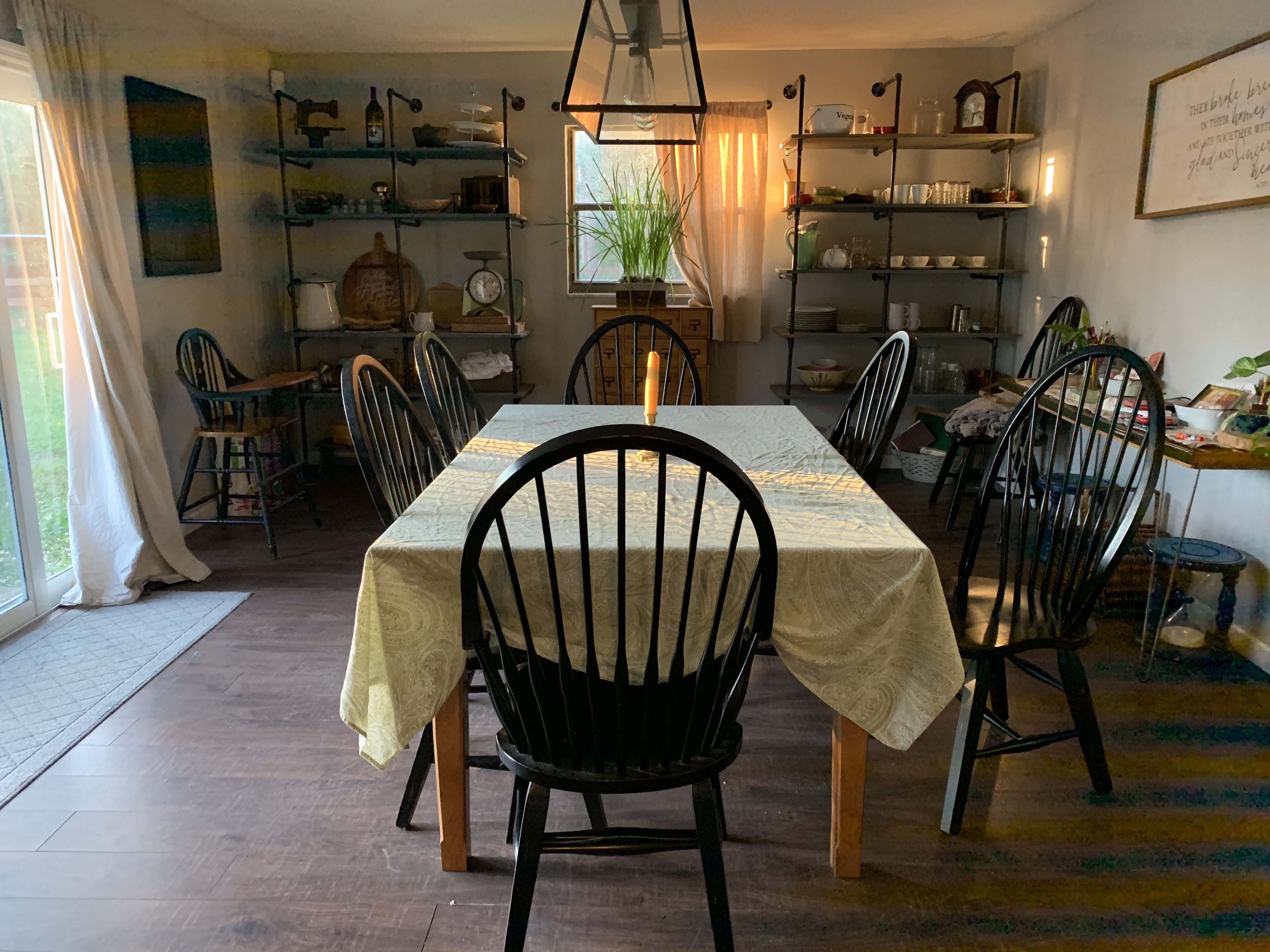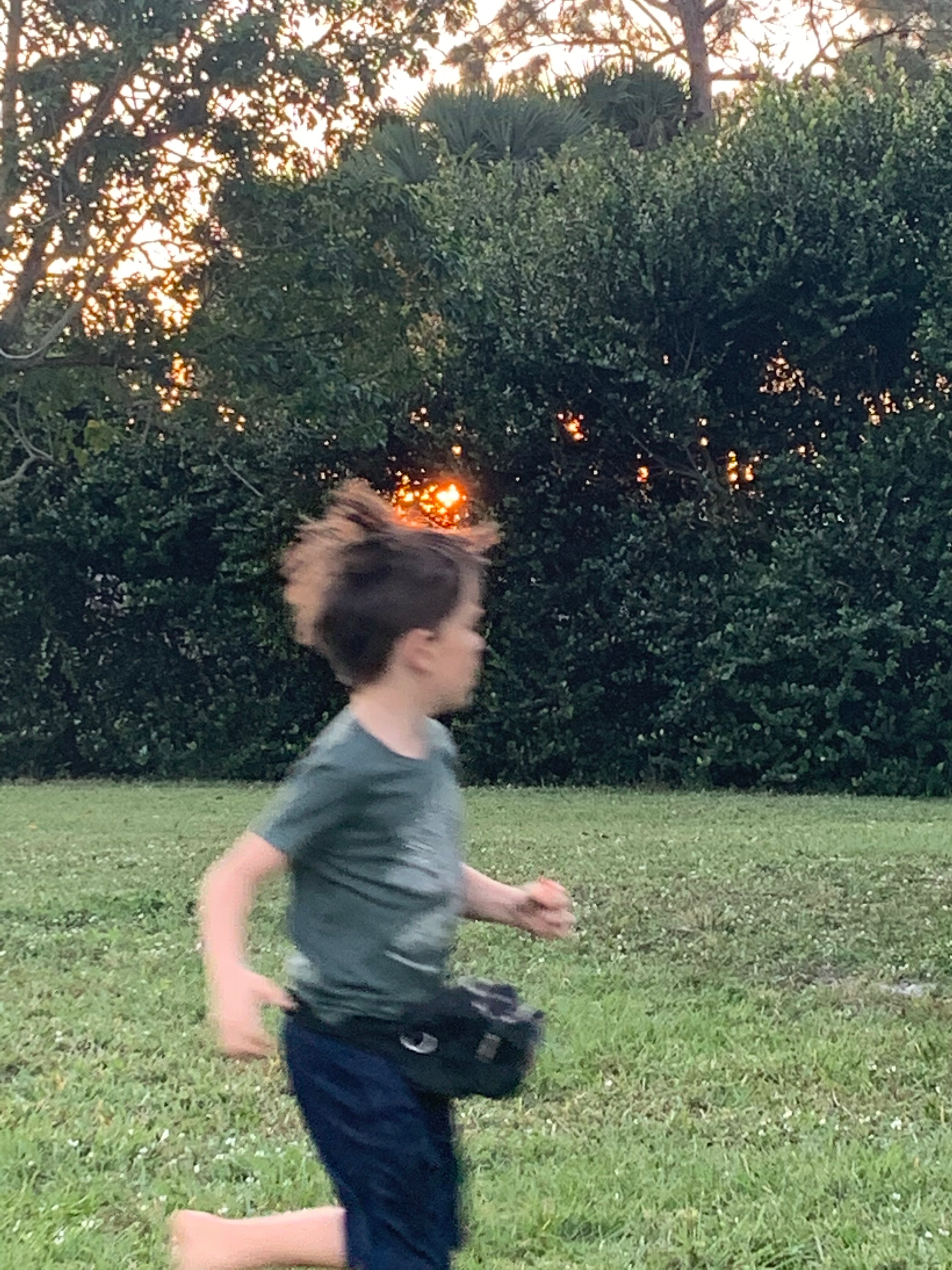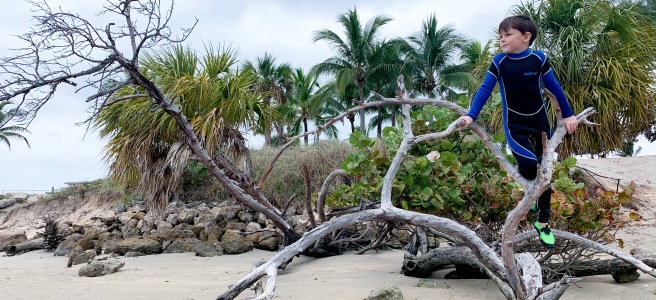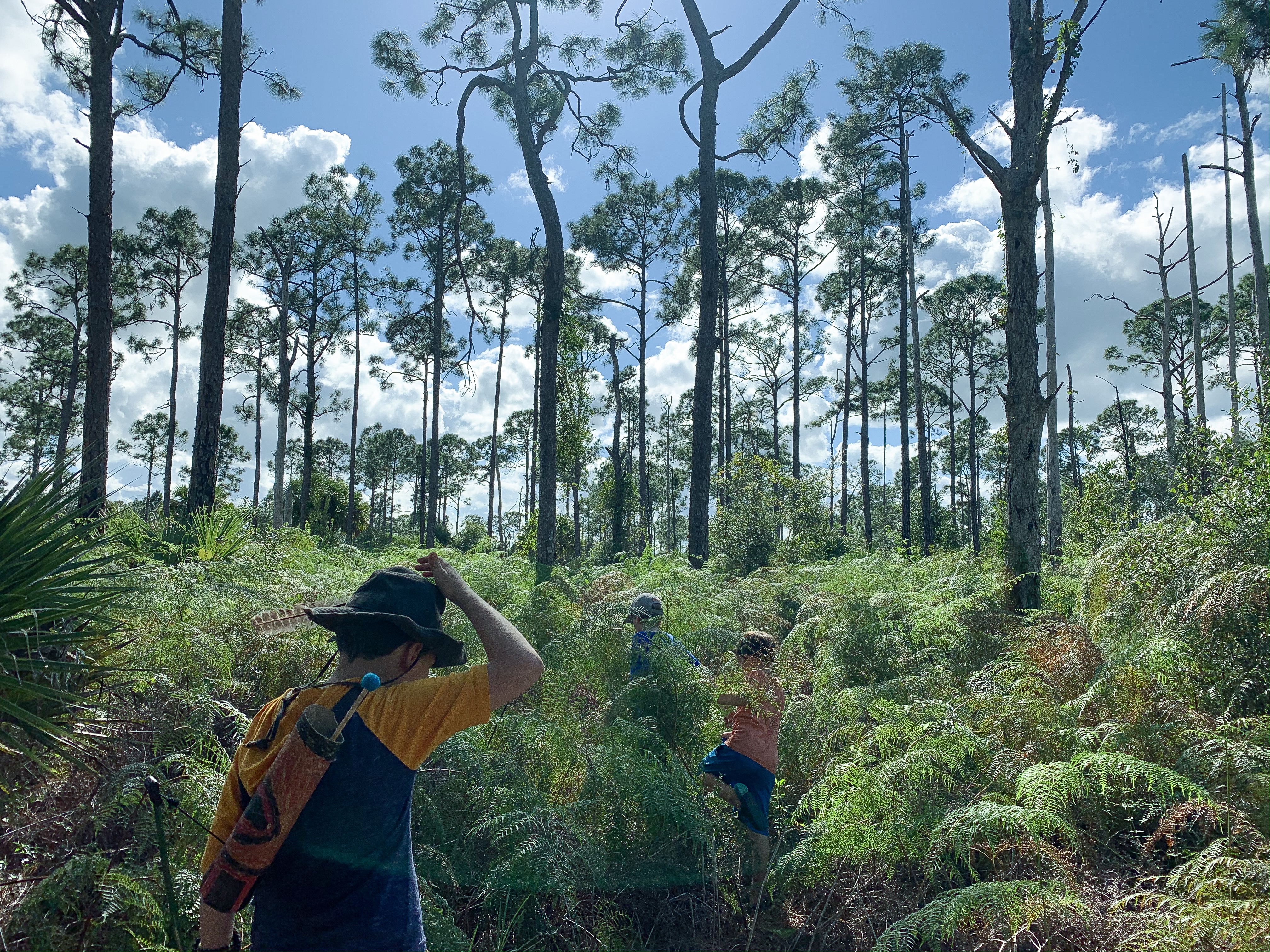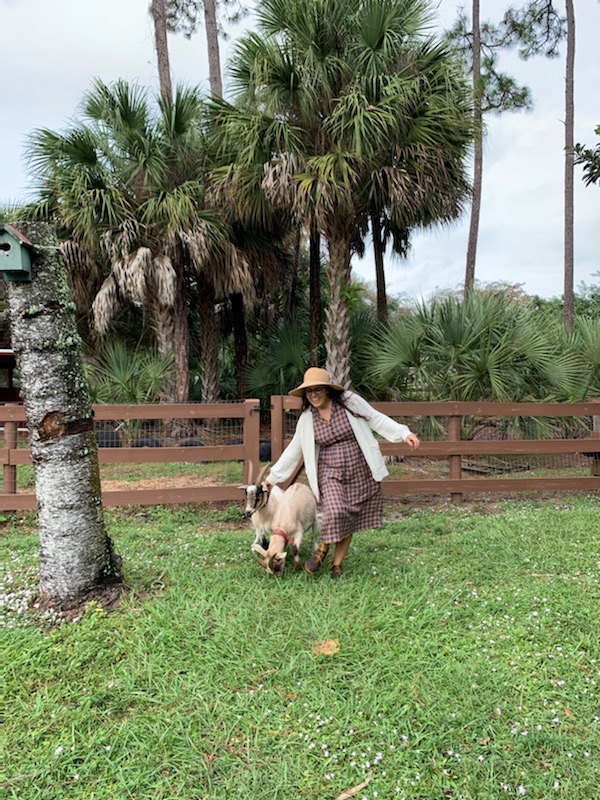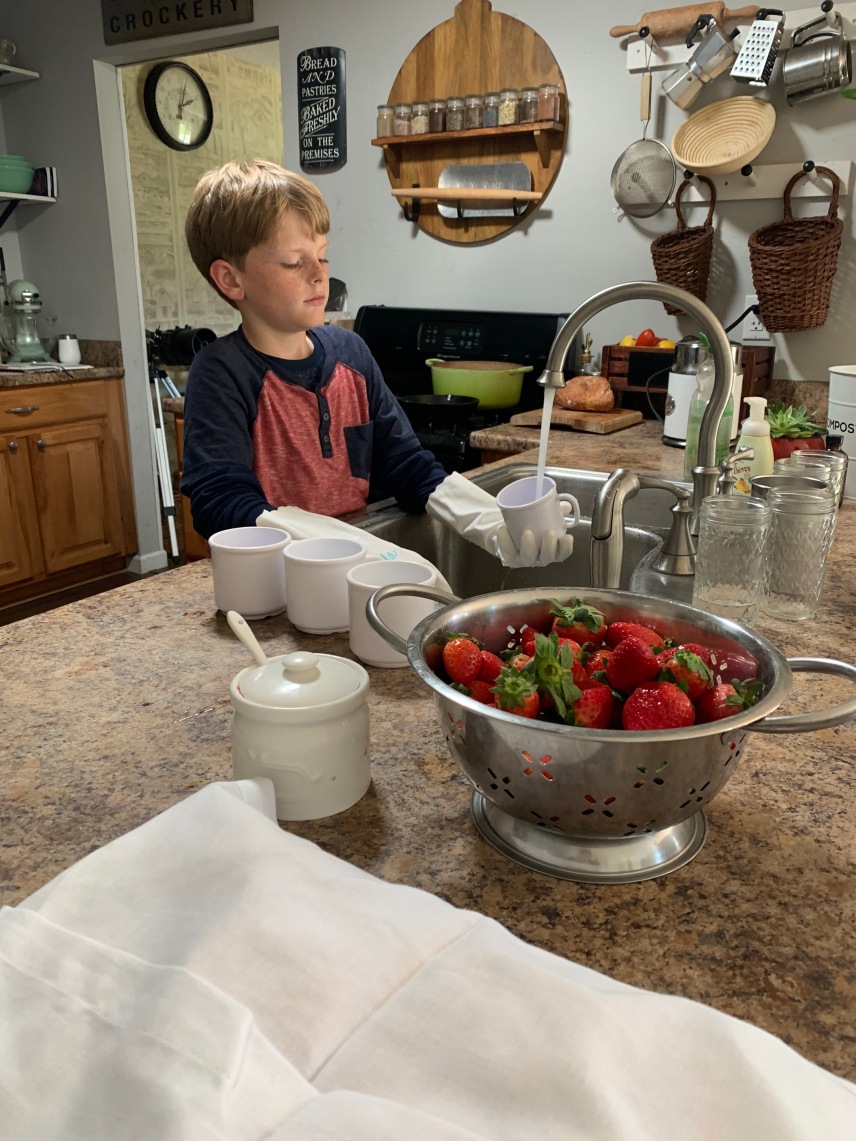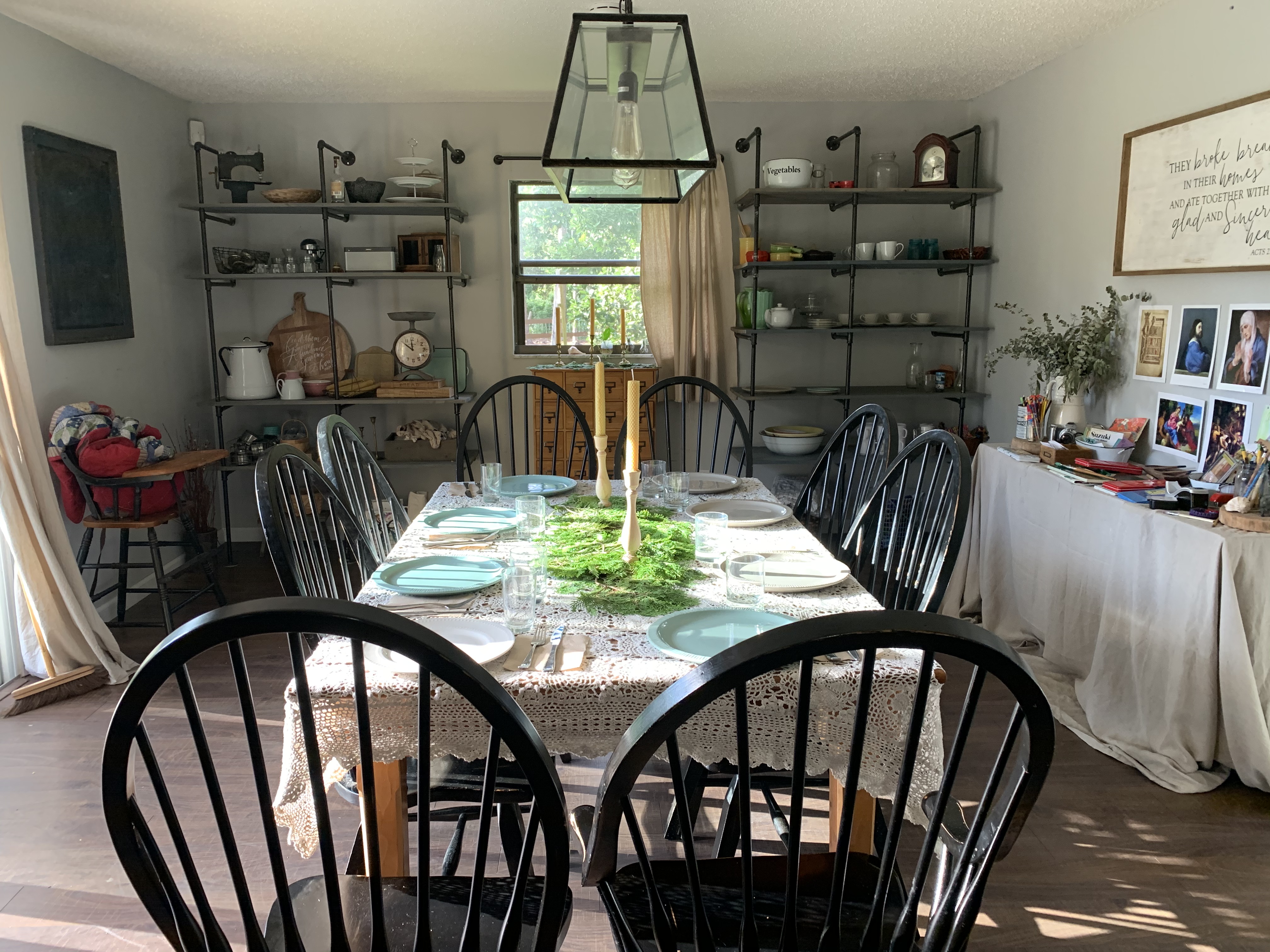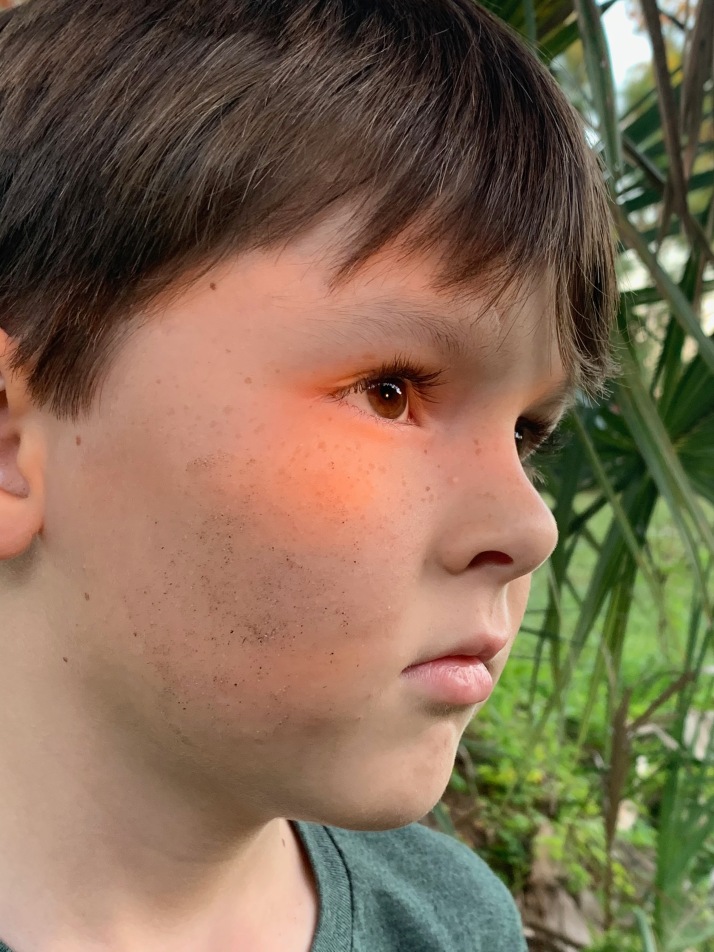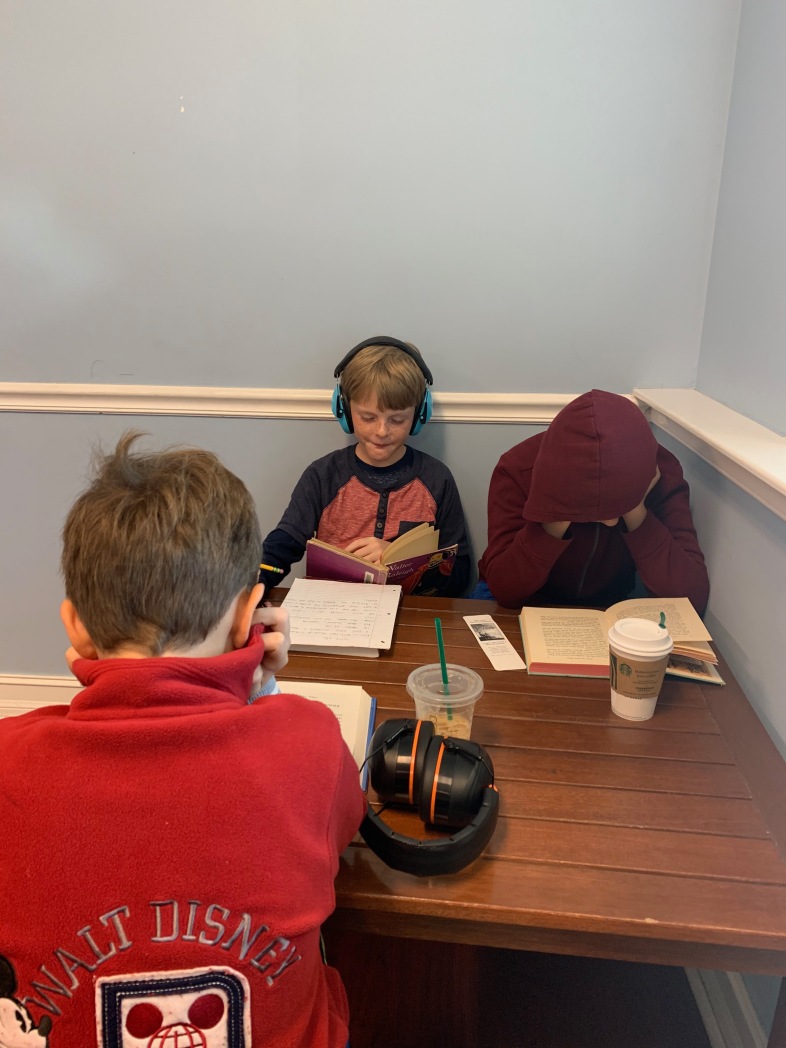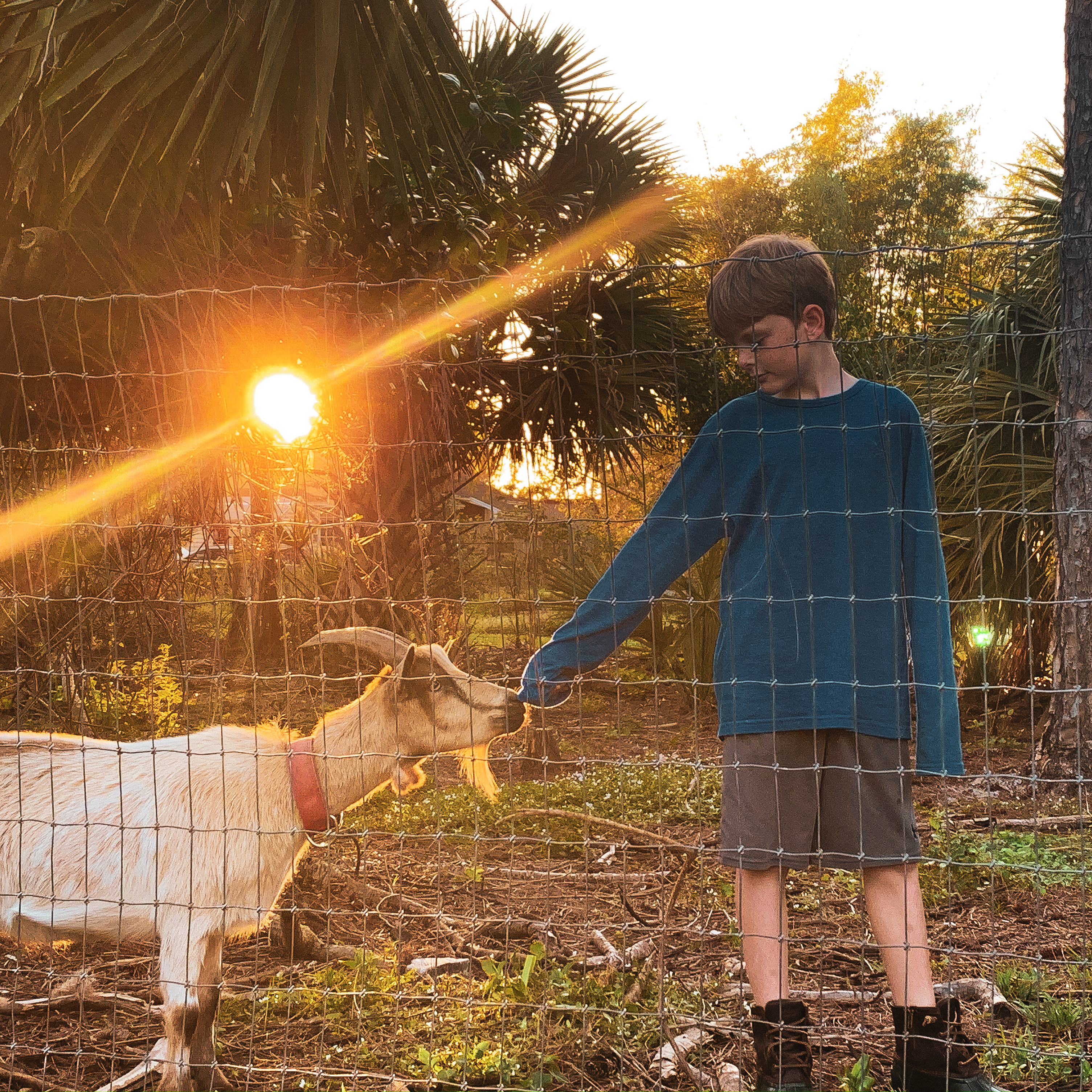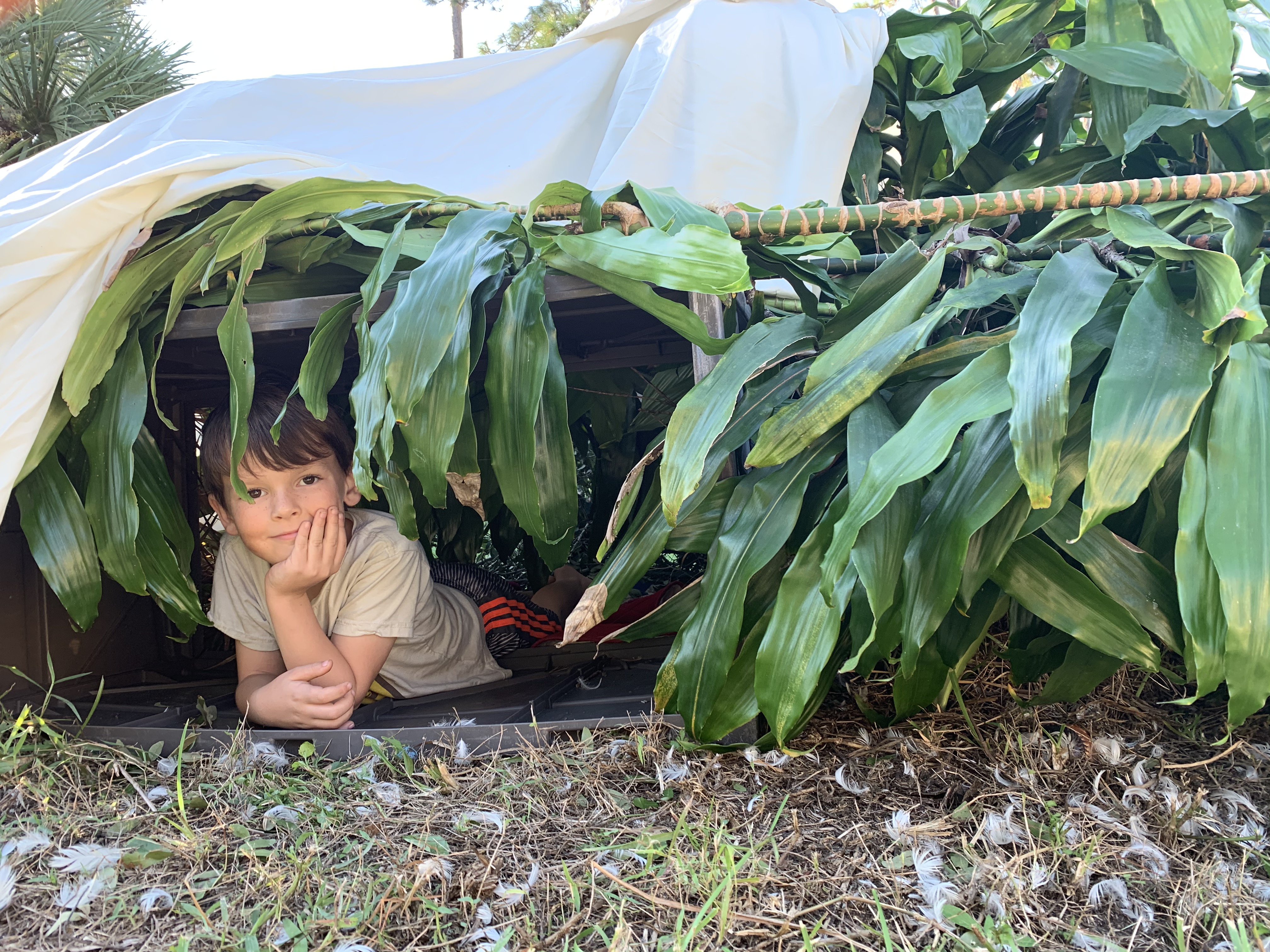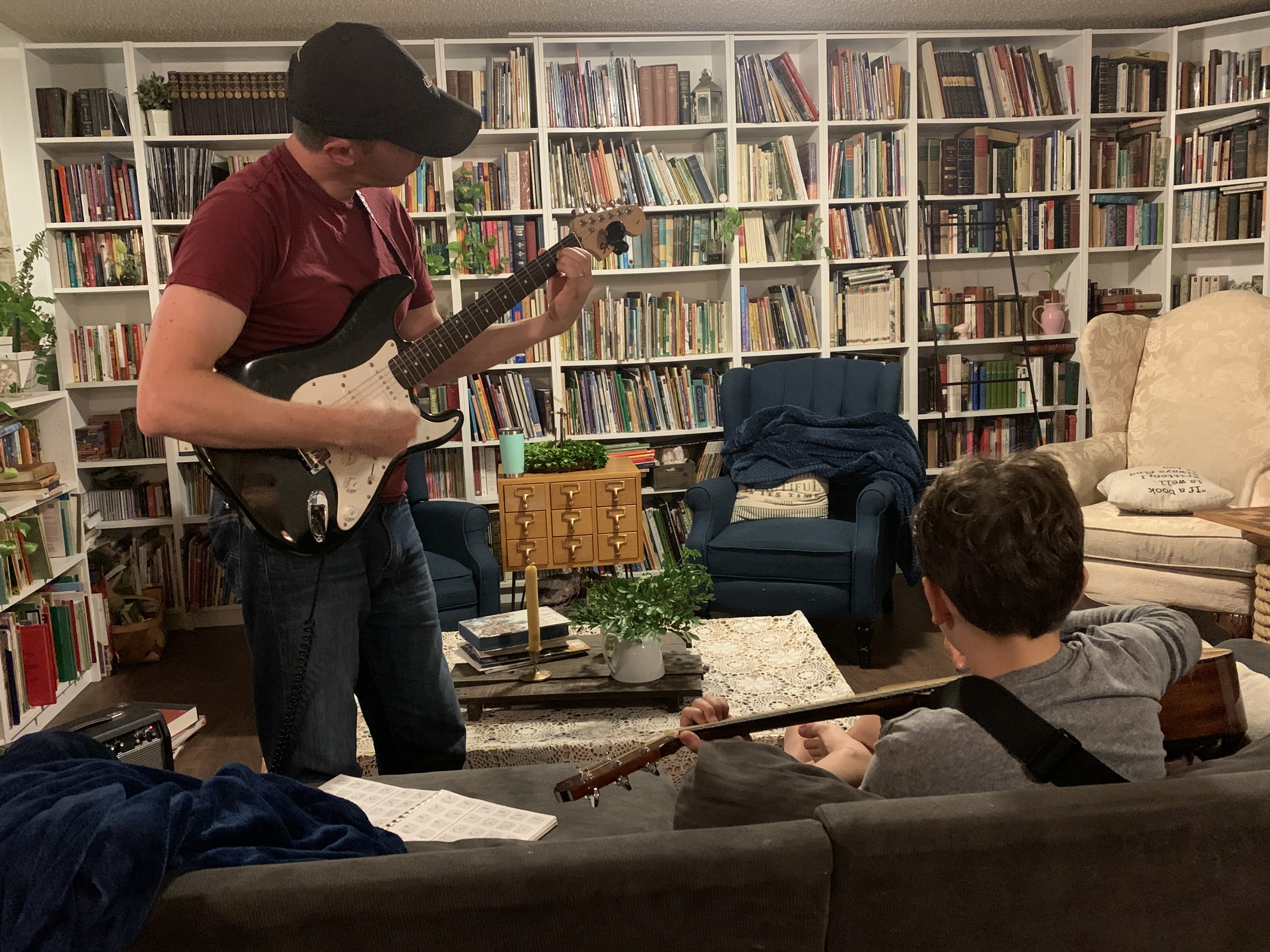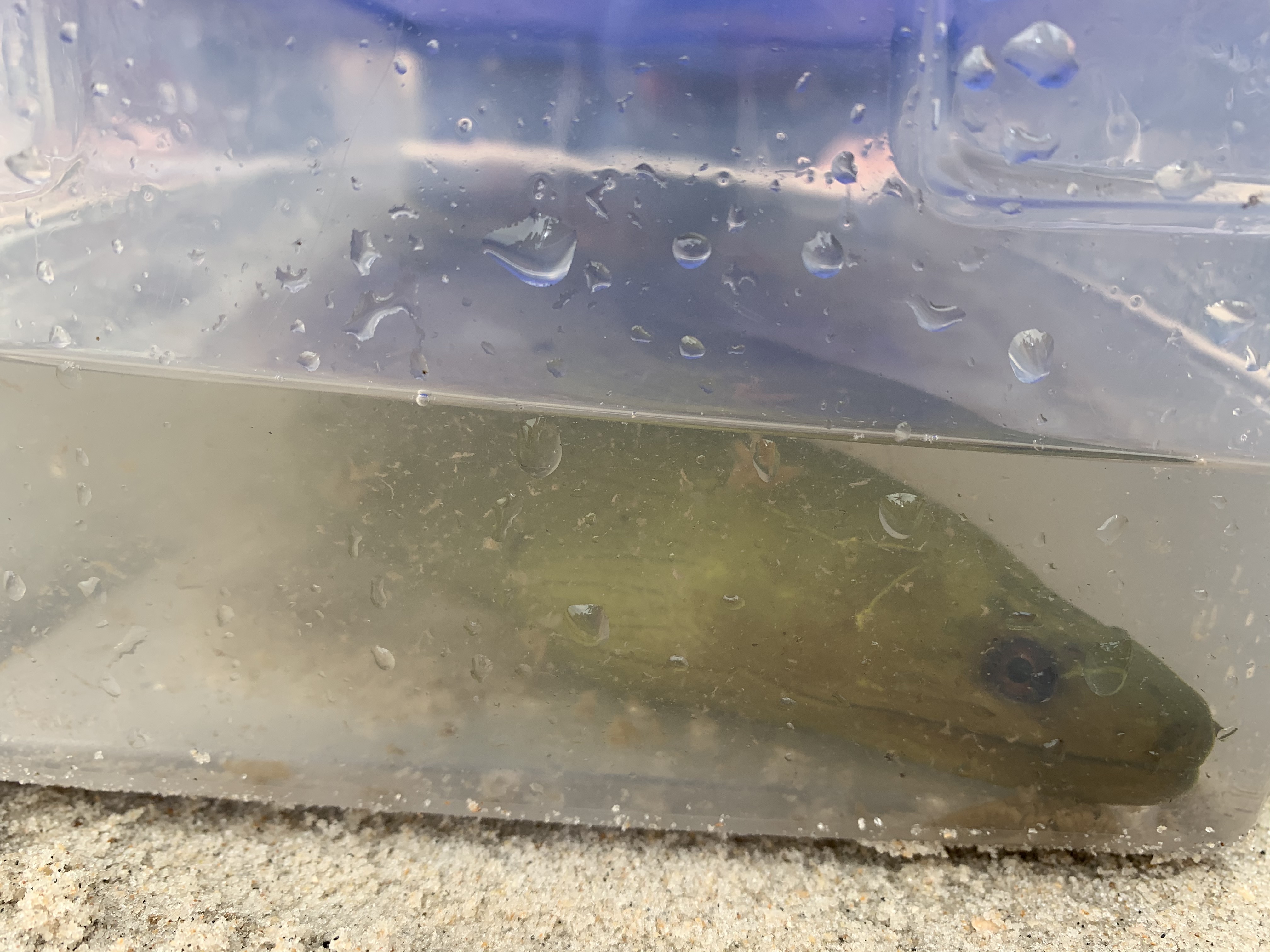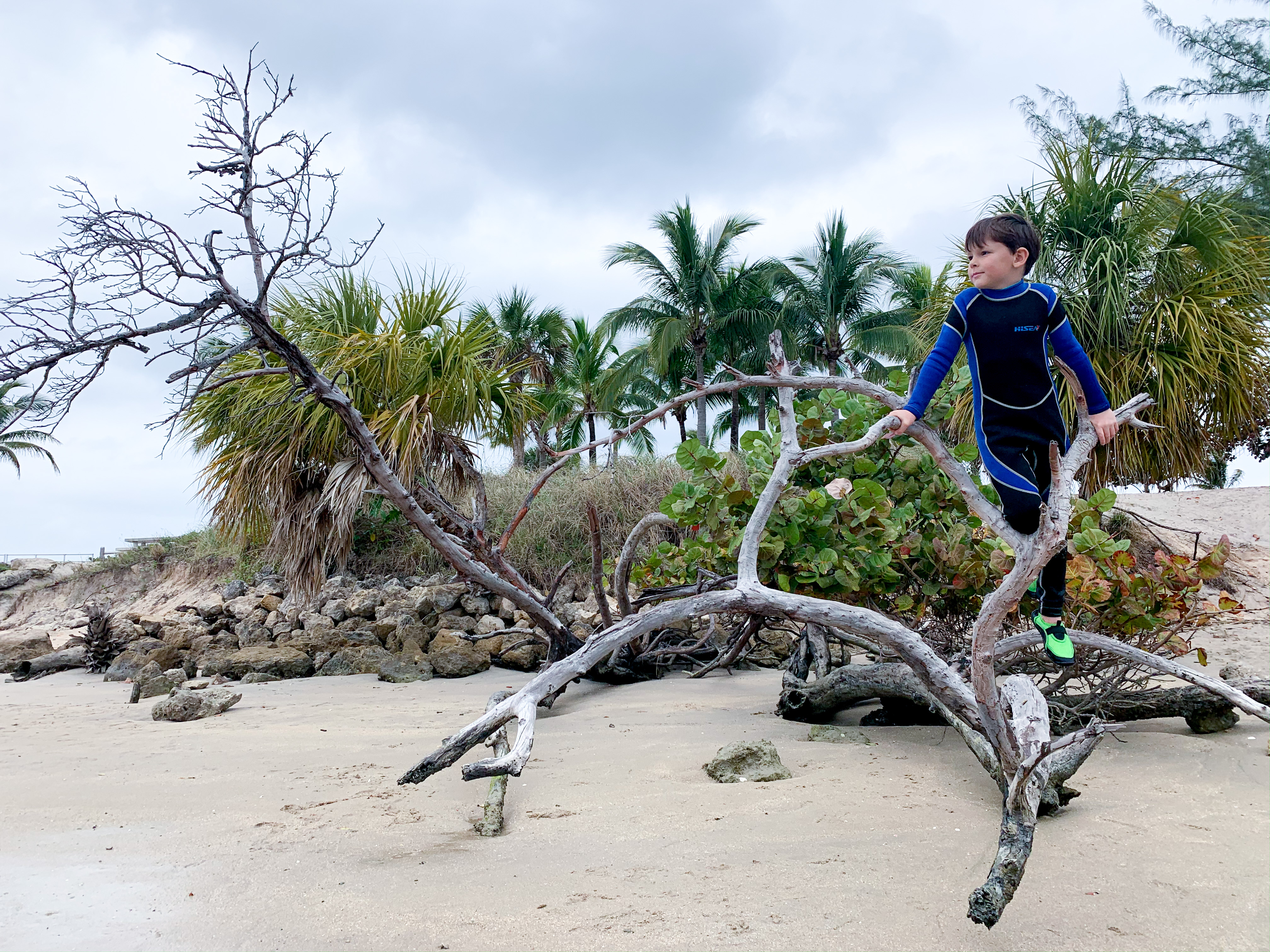I already wrote a post detailing how we prepared our son, our Dialectic Dyslexic, for entering Challenge A and I wanted to take a few minutes to recap the year.
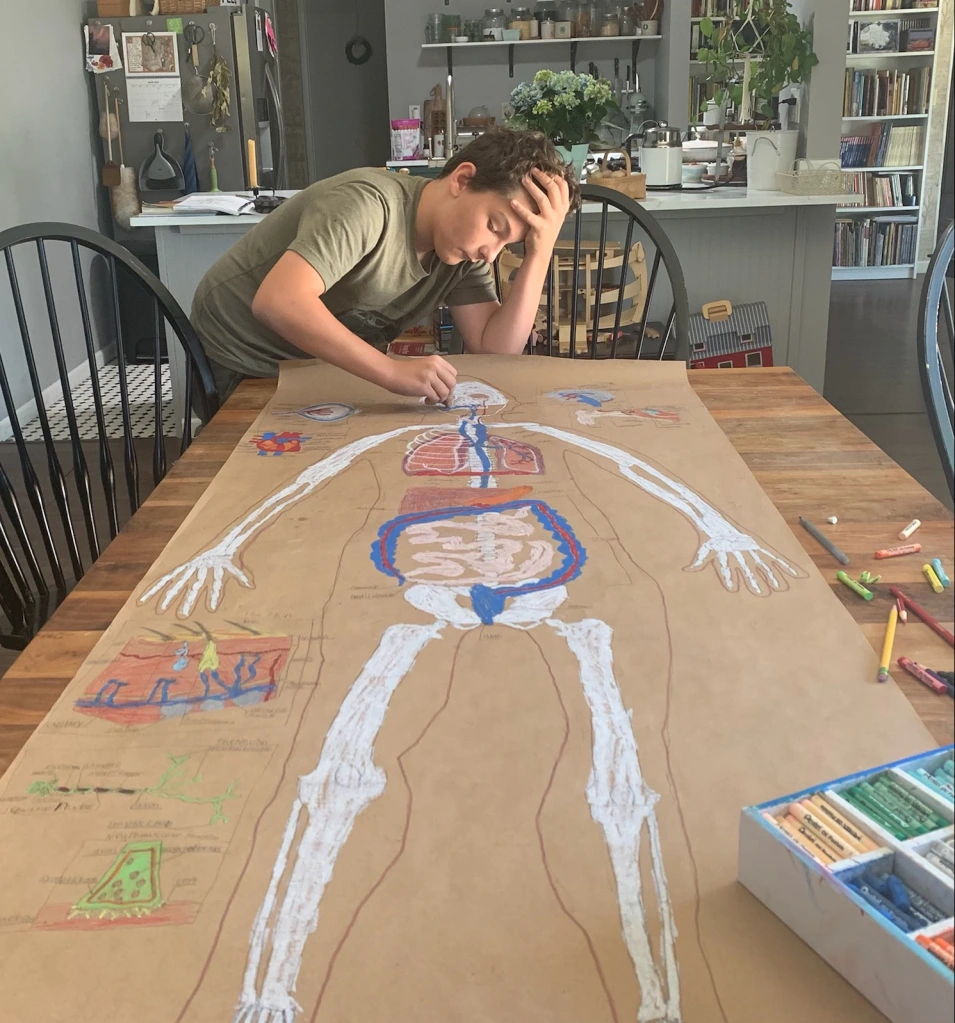
The best thing I did as a parent to prepare myself for the Challenge A program was to read “The Question” by Leigh Bortins. The second best thing I did was to not burden my child above and beyond what the curriculum laid out. I remained confident in my decision to personalize it for my son and his gifts while still challenging him to stretch.
Reading “The Question” helped me understand that Challenge A was not the stopping point. My child did not need to master the theme of ownership in order to have a successful year. “The Question” helped me see the bridge leading into the upper Challenge years and reminded me that not all children cross the bridge at the same time. It helped me learn to ask good questions and even the power of the right question at the right moment. Admittedly, an art form itself.
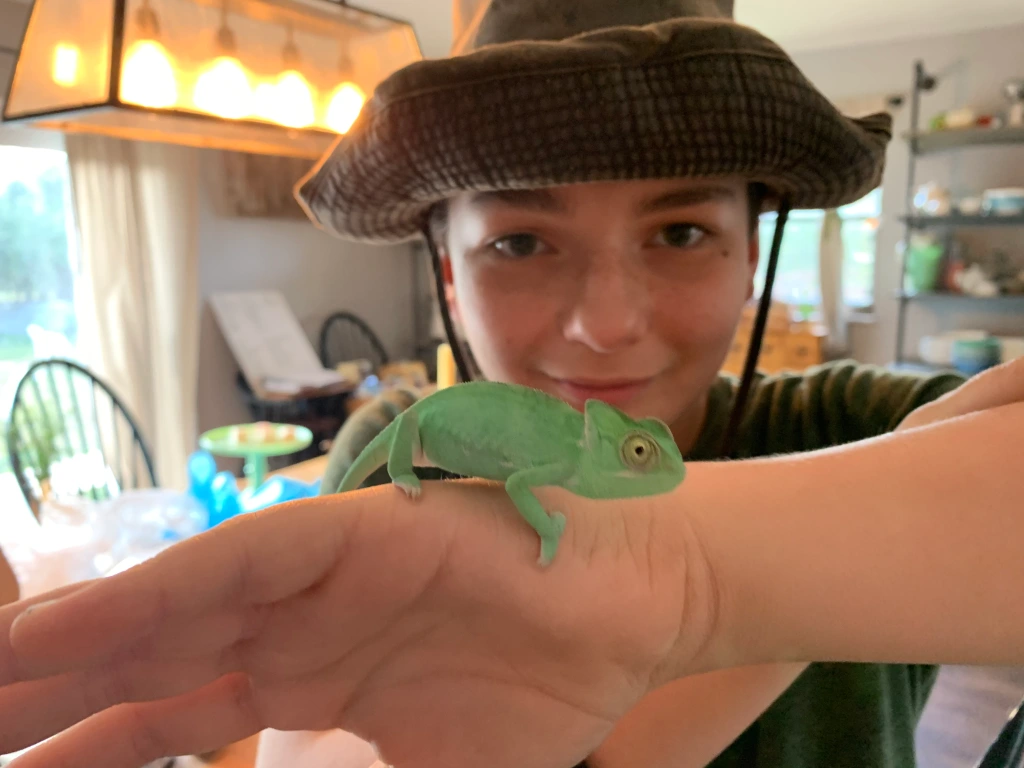
The theme of Challenge A is actually, “personal investment leads to ownership” and I can say, both as a Challenge A parent and as a Challenge A Director, that everyone in the class experienced that truth and understood that it was true. Even if they only did half the work the student to their right accomplished, they all learned this lesson and in my mind, THAT is the real accomplishment. I’ve known adults that can’t grasp this concept.
The scaling of certain strands within the program to meet the needs of my child and not add to their load before the starting bell even rang, helped us narrow our focus on the goal at hand. It was a stretch but it was doable because we had ROOM to stretch. I’ve been around CC communities long enough to witness how quickly kids (and parents) burn out when they try to fill their plates with too many good things. We kept it simple and laid reasonable, reachable goals that required him to push himself without asking him to exhaust himself. We needed to make margin in his life for rest and play and room to follow his own pursuits and interests. We needed margin for relationship building between parent and child, to leave the door open for more conversations at home about the wonderful things he was discussing in class on community day.
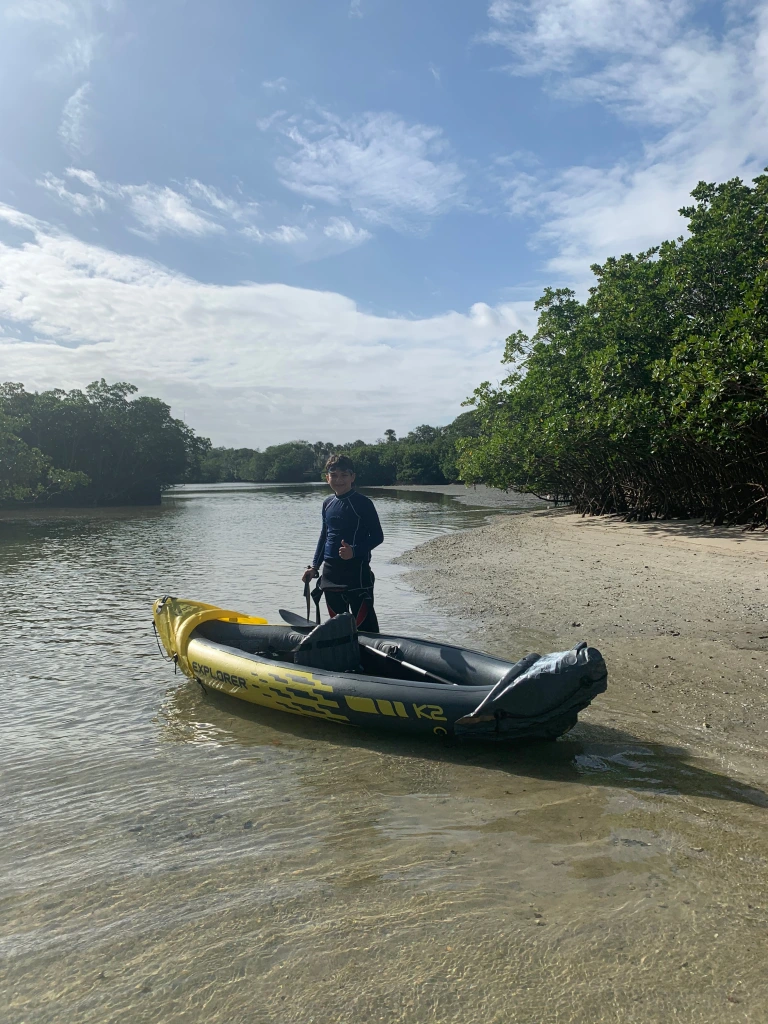
This was accomplished by having regular planning meetings with our son, who has low executive function skills. Meetings and execution went like this:
Step 1: Pull out the family calendar so he can see what is happening between community days. Tae Kwon Do classes, doctor’s appointments, visits from family or friends, dinner dates, etc. This was important because he is dependent upon us and our schedule.
Step 2: Pull out the Challenge Guide and read what work needed to be finished at home that week and allot time for each item. We spent a solid hour on Cartography every day and a solid hour on Latin every day. Why? Because those two required the daily diligence over the course of the year to produce fruit. He had a Saxon math lesson each day. We alternated days with Reasoning and Research strands the first 2/3 of the year. Once Research moved into Biology we had to allot daily time to it as well. Finally, we had to set up a schedule for each three week rotation within Exposition. He has dyslexia so this required a lot of honesty for what tools he needed, what time of day he worked best and how much time he required to accomplish his goal.
Step 3: We would pull out his planner and write on top of each day how much time he had available to work. We always assumed we had less time than we did. This was crucial! Sometimes things take longer than you think they will. On good days, he would have extra free time if things worked out well.
Step 4: He would start by writing in his REST and BREAKS first. This world has lost its mind and has no idea why REST is an essential part of our work. We have to fight to teach it to our children (Lord, help it to rub off on us along the way). He writes in his rest and then he writes in what work he should be doing each day and account for how much time each strand requires.
Step 5: Once all the puzzle pieces for the week were laid out, he got to work. The first 10 weeks were spent trying to figure out how to study. Thats a skill in itself! Especially for someone who struggles with focus. We tried different settings and approaches and finally came up with a few solutions. For example, he ended up setting timers for his work to keep himself paced and eventually learned that he needs a moderate amount of background noise to be able to work. Too much quiet or too loud, and he could not focus.
Step 6: DAILY check in time. This is hard, because we don’t always have time for this sort of thing but it was important to have that accountability. There was a box on each day that needed my initial to close out the day. First to make sure he was being diligent with the work he needed to do but also to make sure he wasn’t doing too much. One hour on Latin means one hour. If you don’t finish that last exercise, its ok. Close the book and move on. Your brain needs the break! On Week 3 he came to me at the appointed hour and told me he had not finished three of his strands. I looked at him in surprise and asked, “What’s going on?” He confided in me that he had spent hours on Latin and was mentally spent. He even worked through his breaks to finish it all. I thanked him for telling me and we came up with a plan for the next day that included not working beyond those 60 minutes.
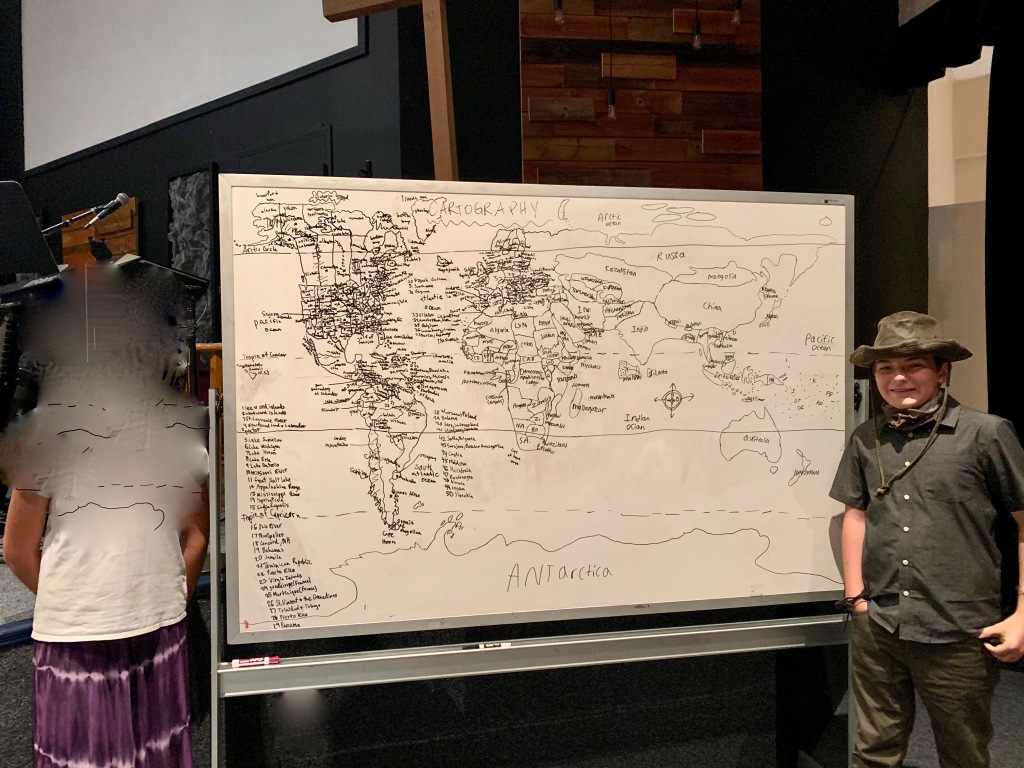
My son has struggled with a few things because of his Dyslexia but he has also thrived with it. He knows what his gifts are because we point them out all the time and encourage them.
There are many ways of tackling Challenge A because Directors are not the teacher. The parents are the teachers. Every community day I lead a seminar comprised of 8 students that all have different teachers. They each had a different Challenge A experience. That is a grand and glorious thing.
For example, my boy loves nature. He has a remarkable affinity for understanding and explaining all things related to nature. Its a vital part of his imagination that contributes to the nourishment of his inquiring mind and the refreshment of his spirit. You better believe I made it a part of his Cartography study! Every time we moved on to a new region, we spent time during the week studying the nature of that region. He loved it. Challenge A students draw a map of the world from memory at the end of the year and his map will feature animals from all over the world alongside countries, capitals and geographical features. (Since he also has dysgraphia, one way we made his mapping a little more legible is to have him dictate all the countries and capitals he learned so I can type them up. He numbers the countries to correlate with the list which is later affixed to his map).
When we finished Biology, he used his incredible Visual-Spatial skills to draw all the systems he learned onto a human form we traced on butcher paper. What a victory day!
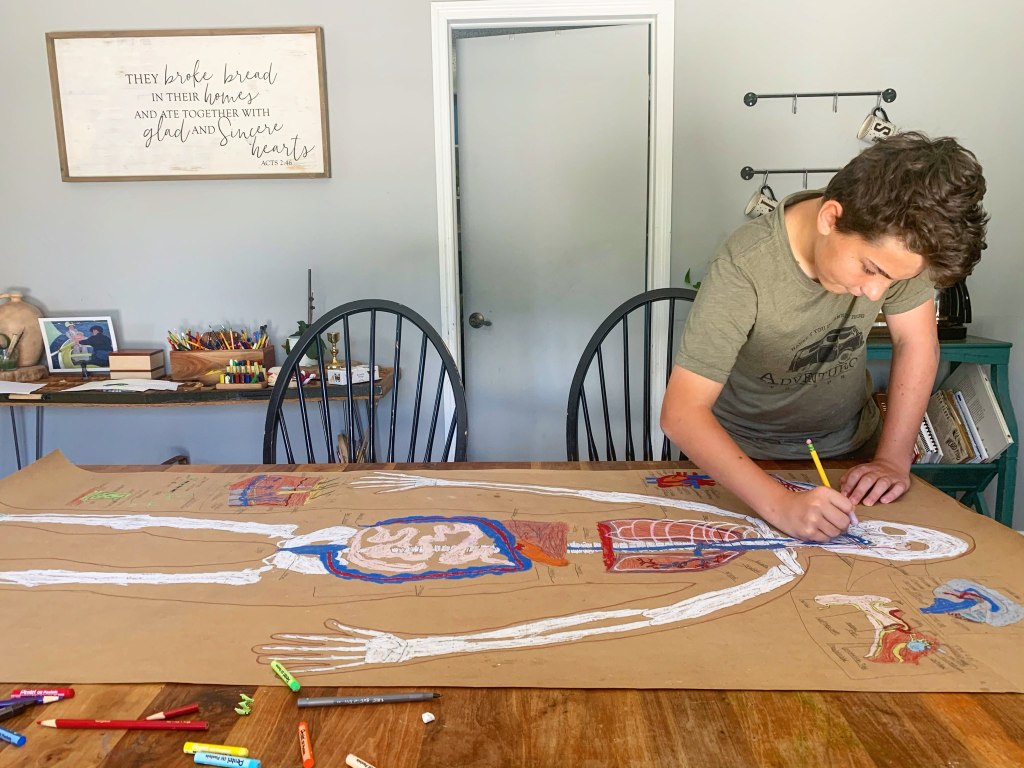
Here is where his particular gifts helped him thrive:
Cartography: Visual-Spatial Learning in drawing, memorizing countries and capitols by repeated LISTENING (record yourself and hit play, my friend) DRAWING Geography terms on flashcards.
Latin: Memorizing Vocabulary by repeated listening, using a whiteboard to pull apart words when parsing or translating. Skills repeated over three years in Essentials helped tremendously here!
Research: Research Presentations about Animals, An animal-themed Science Project and Biology– we found ways to use his strengths for each one of those. Relying on drawing, asking good questions, making solid outlines, etc.
Math: Never had I ever had a conversation about a math problem before Challenge A. This was incredibly valuable and changed the way we approach our regular math lessons. We are gaining so many valuable tools here.
Reasoning: This strand was joy for him. Getting to act out analogies or fallacies in teams, having in class discussions, drawing comic strips. JOY.
Exposition: Auditory skills. He listened to most of his books on Audio while following along with his book open. It took him all year to really nail the art of the ANI Chart, because it took me that long to realize he needed to work on it OUT LOUD first. I also helped scribe his outline and essays for the same reason. I consider LTW to be a THINKING program before it ever becomes a writing program. This year he needed to spend his time thinking through the form well, so he could learn it. This was crucial. His beautiful memory skills helped so much here!
I am truly amazed by all I witnessed this year. The other day he shared some of the things he learned with me. It blessed me deeply to hear him say: “preparation, organization, planning, and time management are so important, Mom.” He gets it. We are taking an executive function course this summer to put a few more tools in our toolbox for next year.
Challenge B is on the horizon and we are eager for the next challenge. He learned a lot about himself this year and is already making plans for his study habits next year. He still struggles with aspects of work but because of all the flexibility we found within this program the struggles aren’t what determine his learning ability.
This summer, I will read “The Question” again and maybe, “The Conversation,” too. I’ll gather what is in the curriculum for next year and consider the tools he has in his possession and make a plan for how I will lead as his teacher so he can grow at home and contribute in class.
